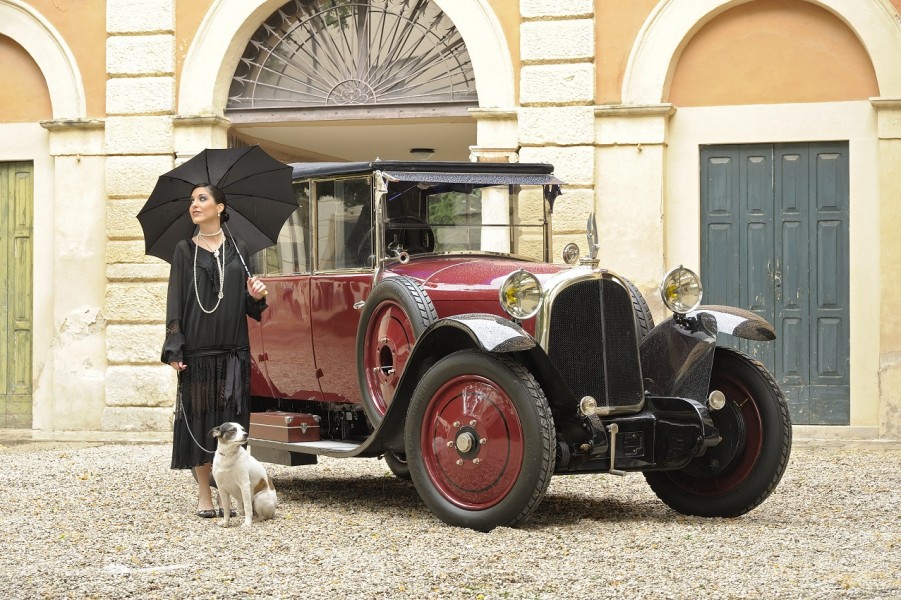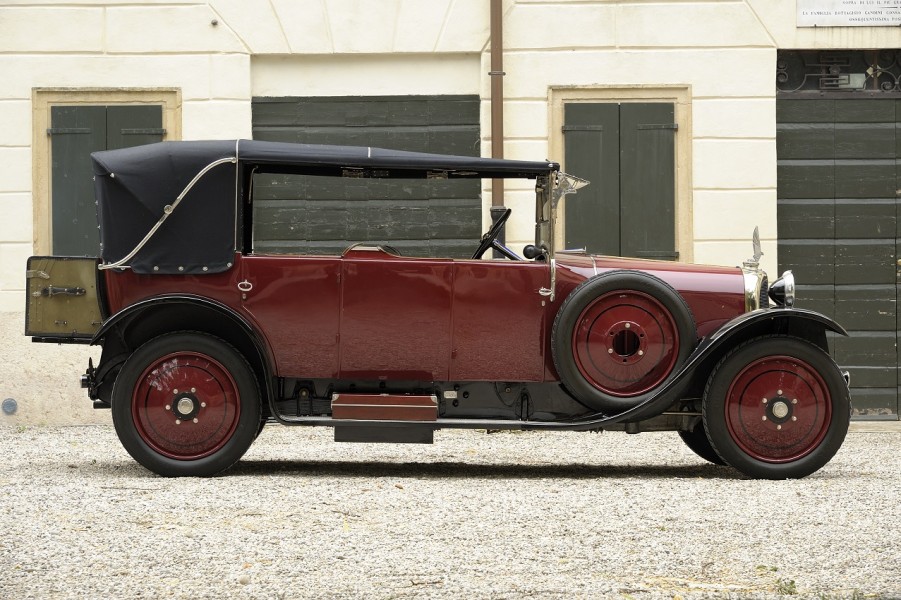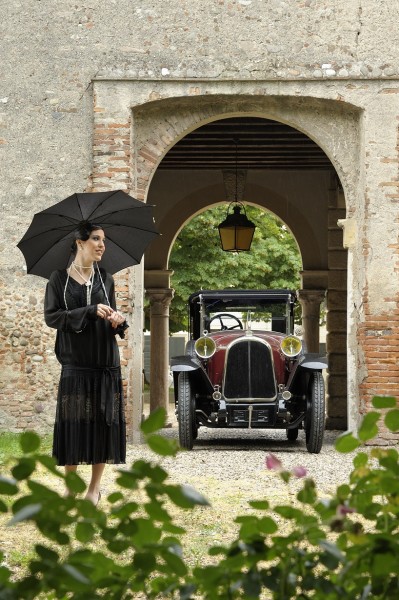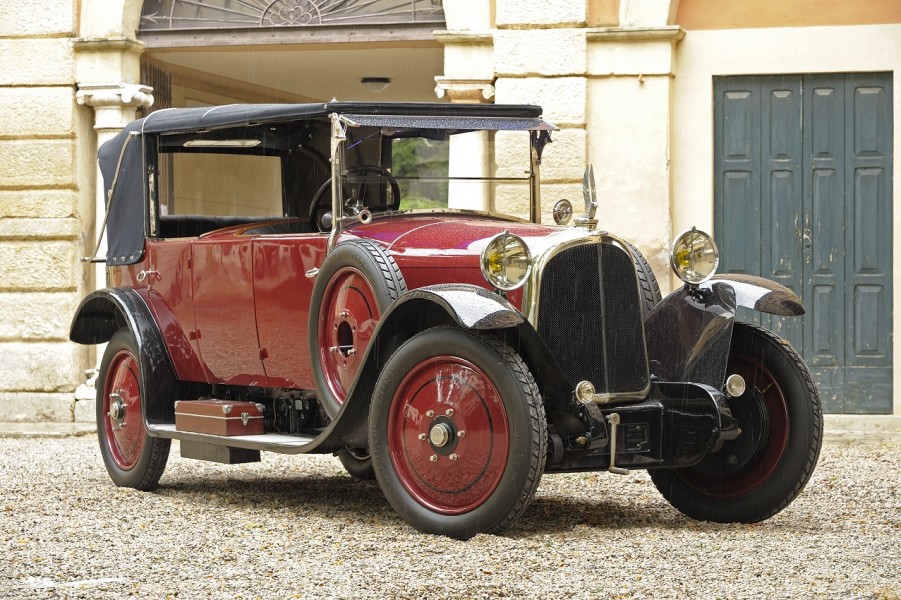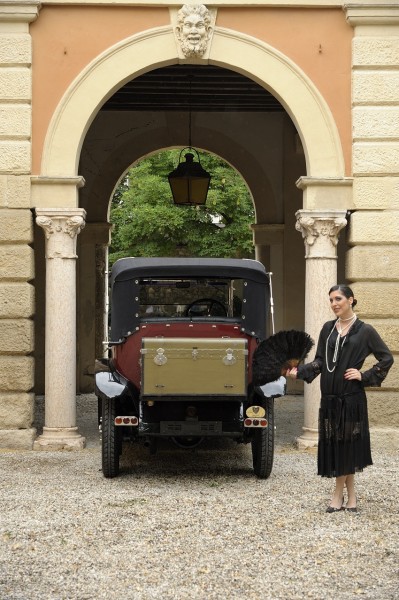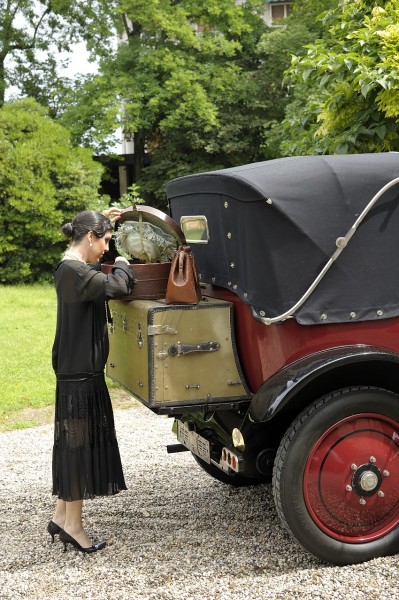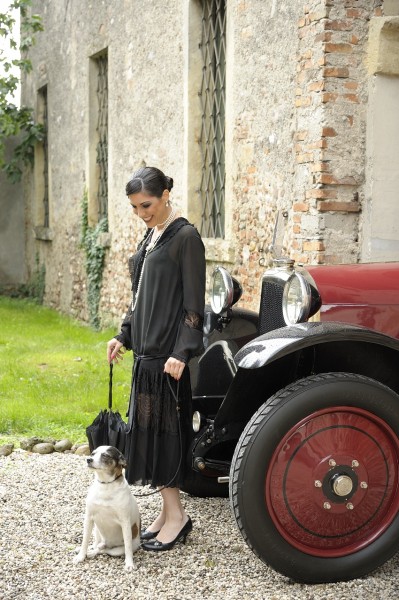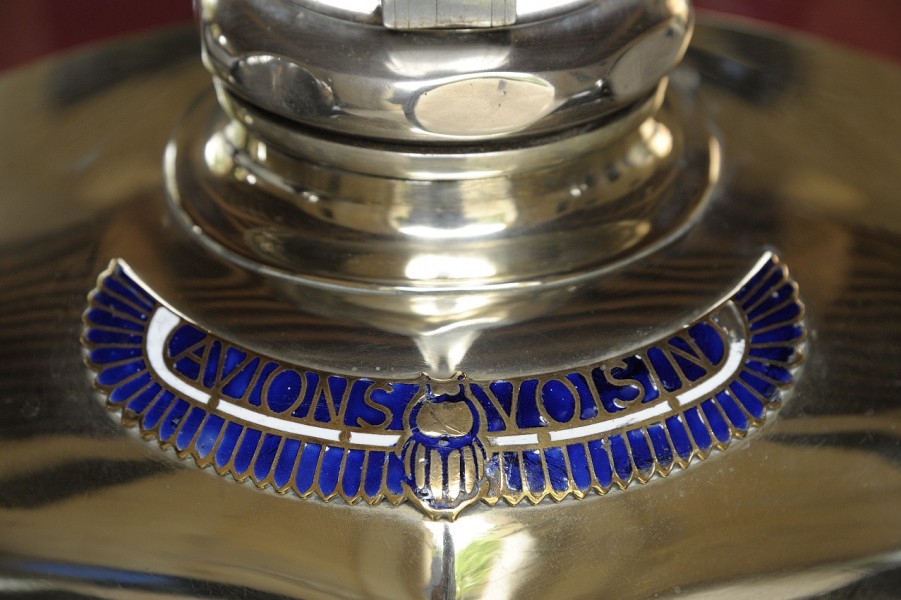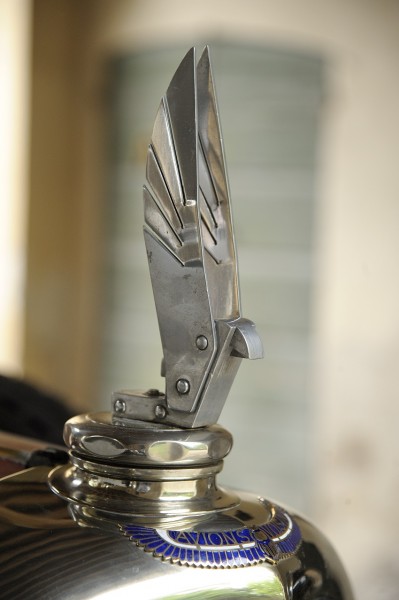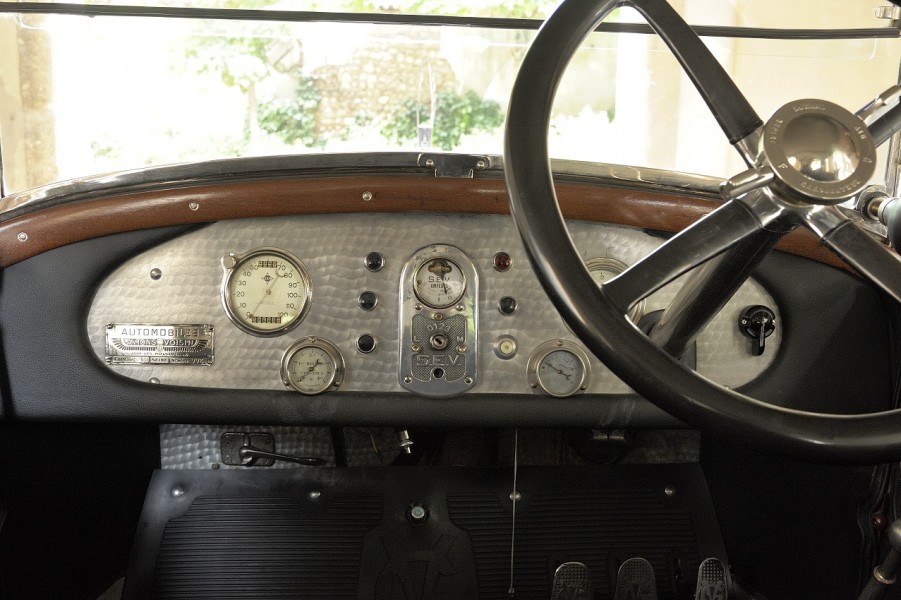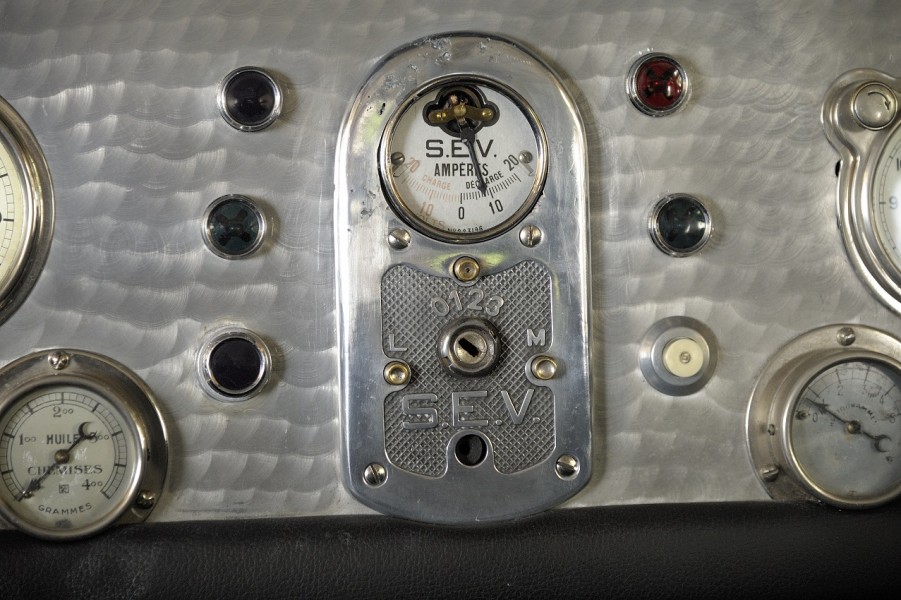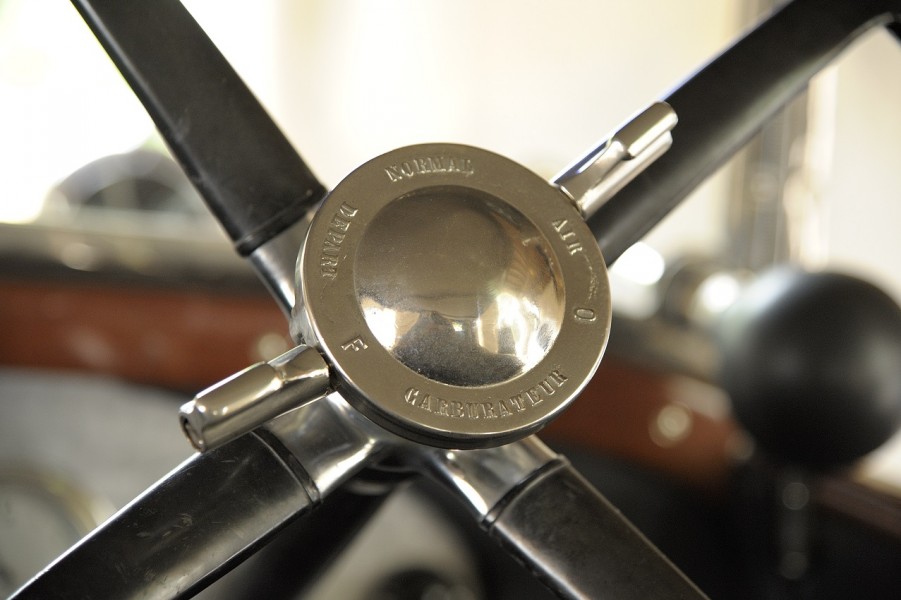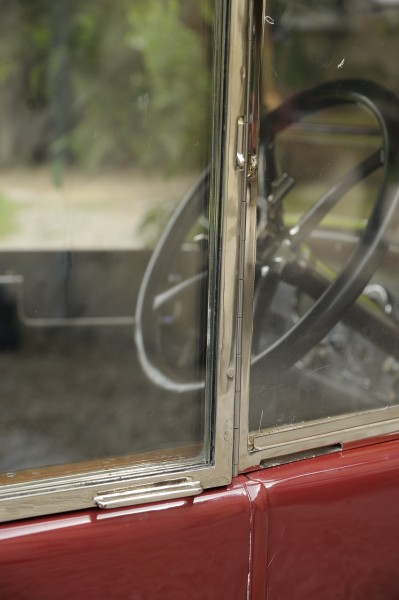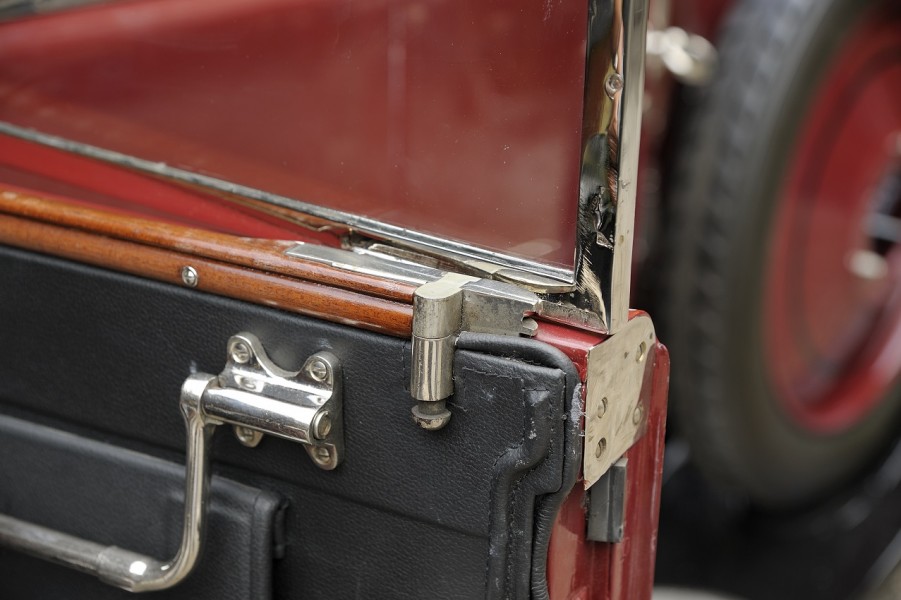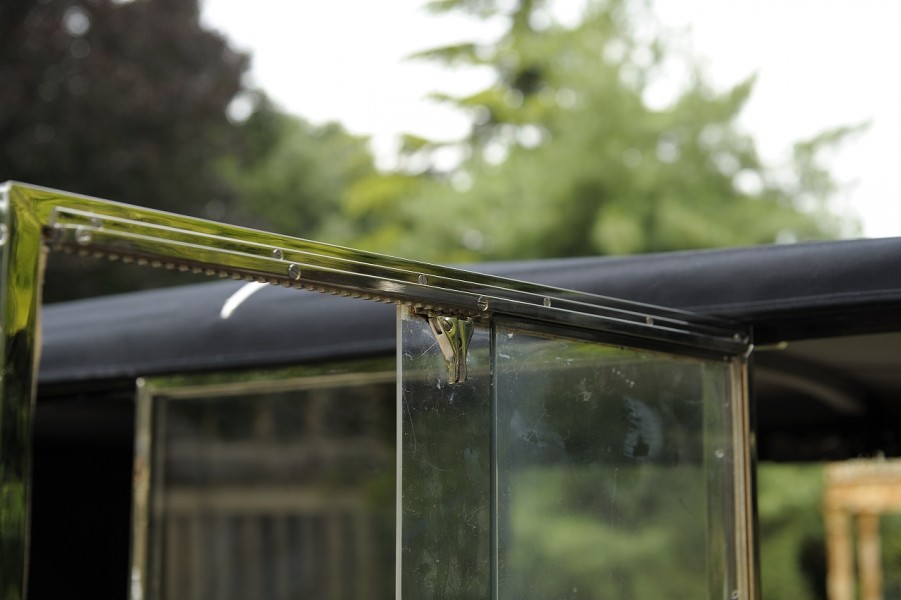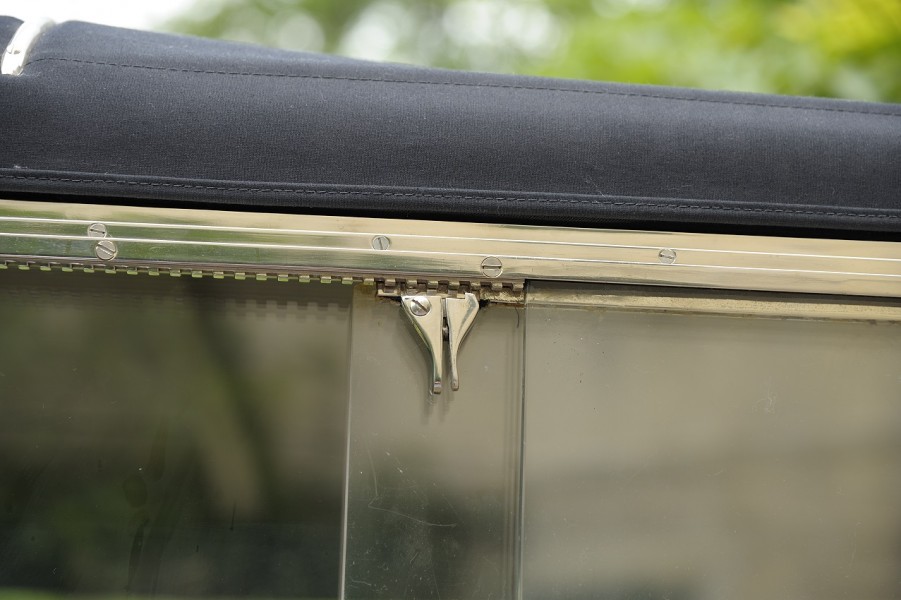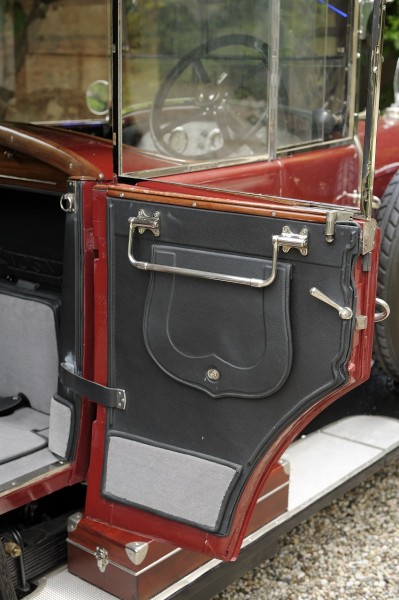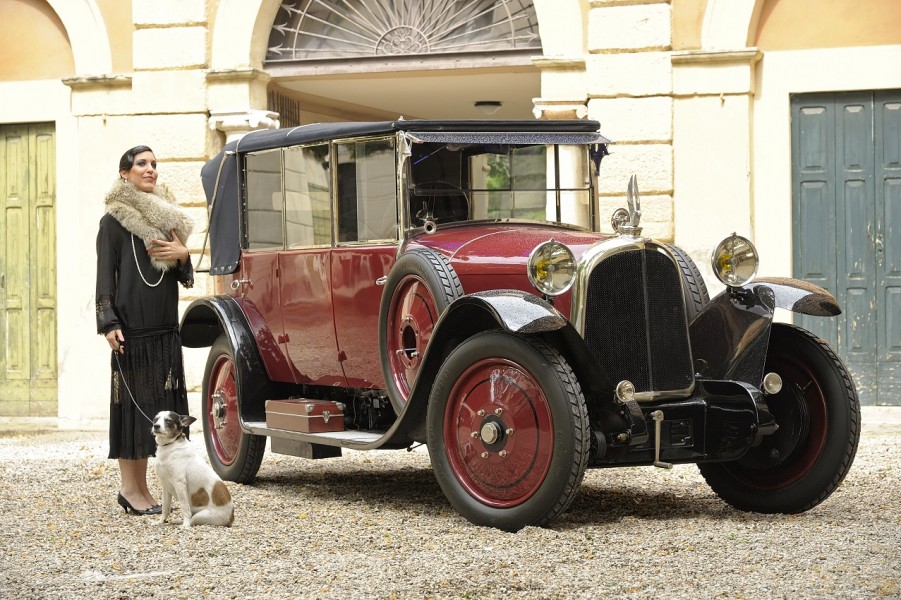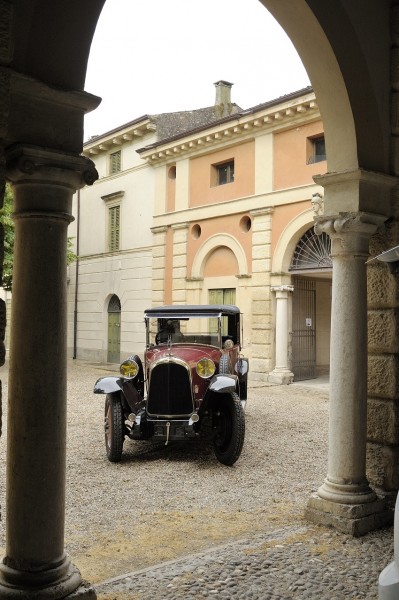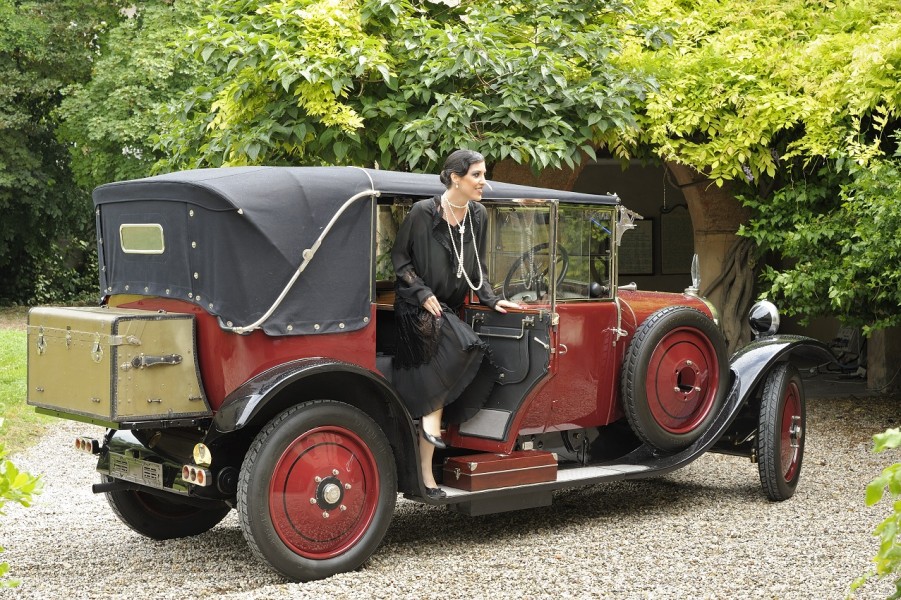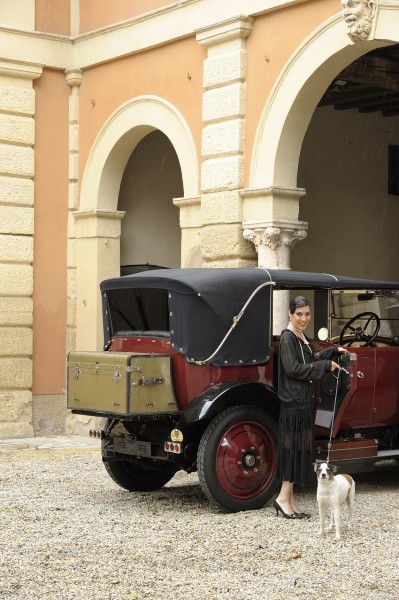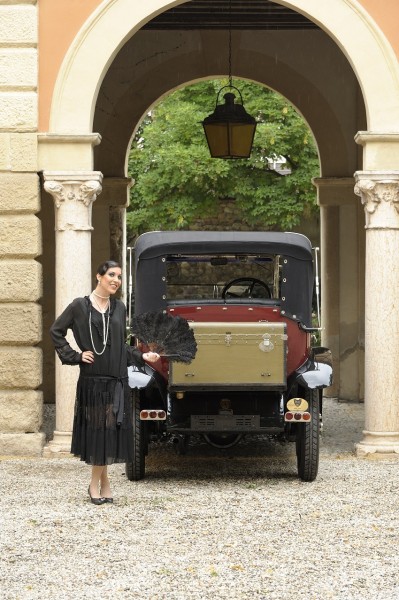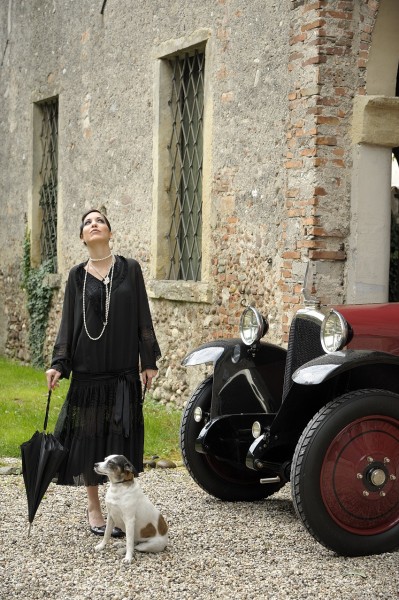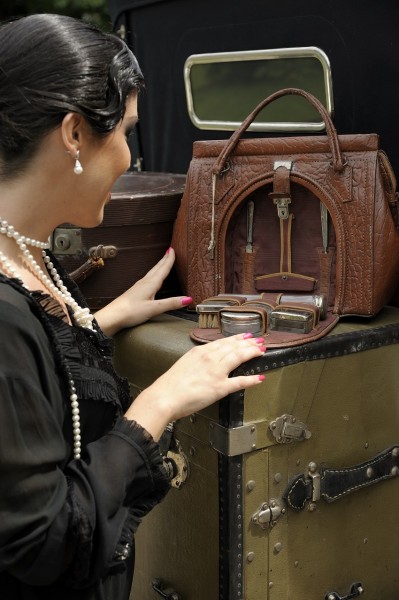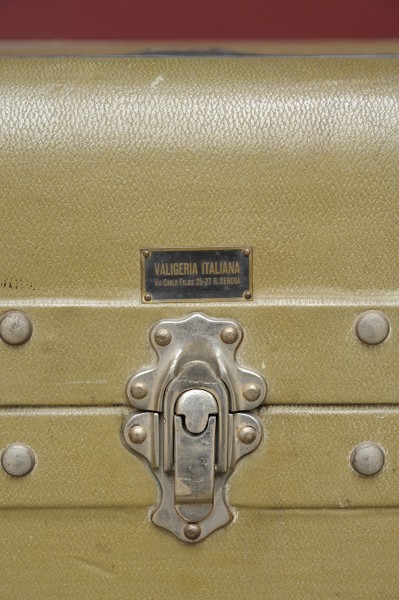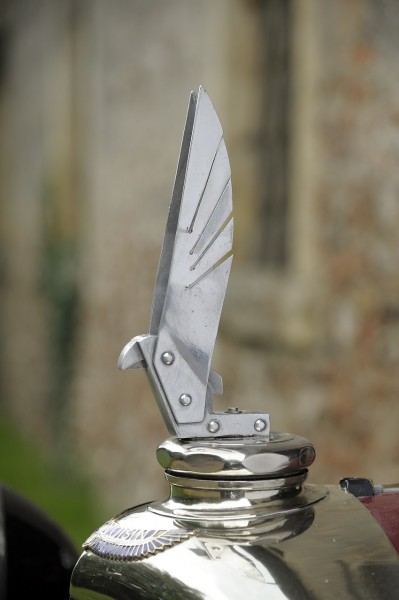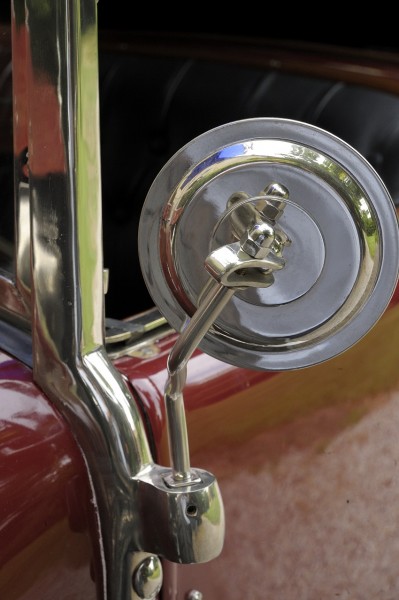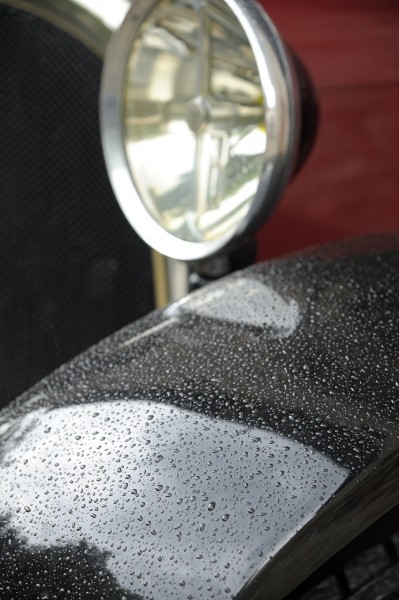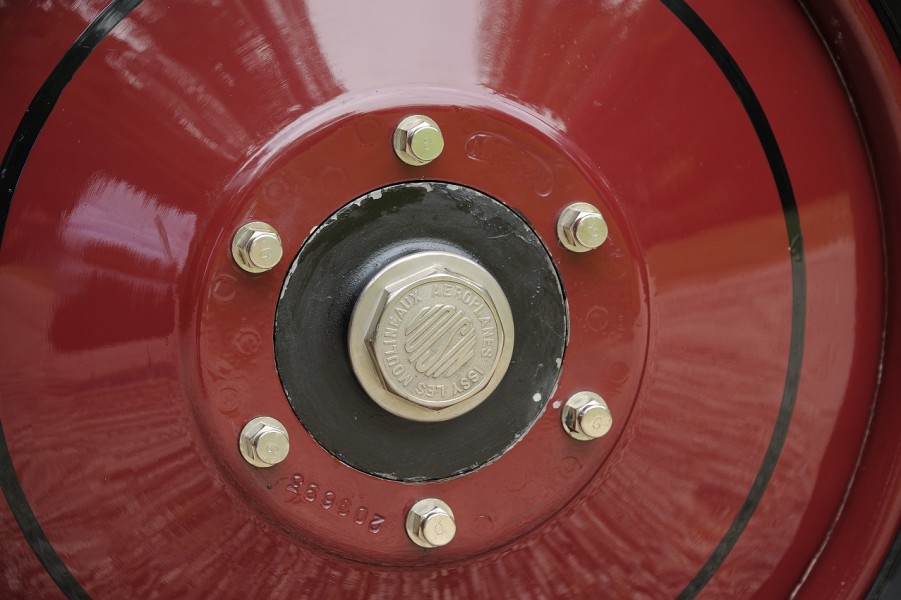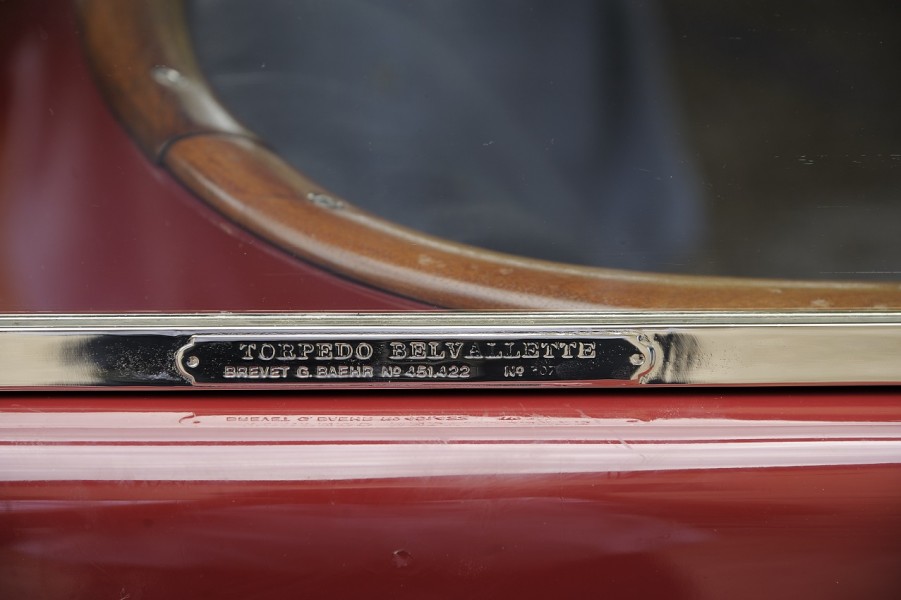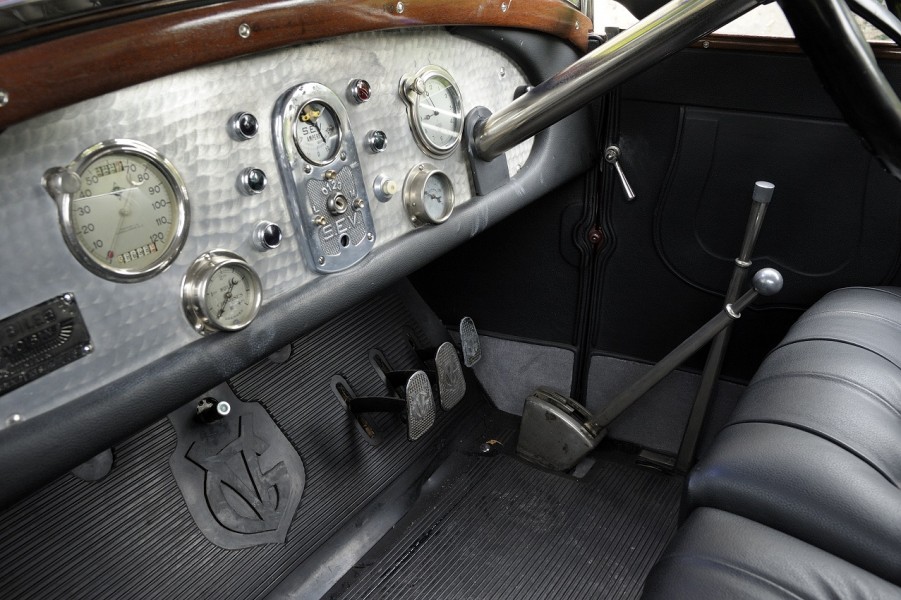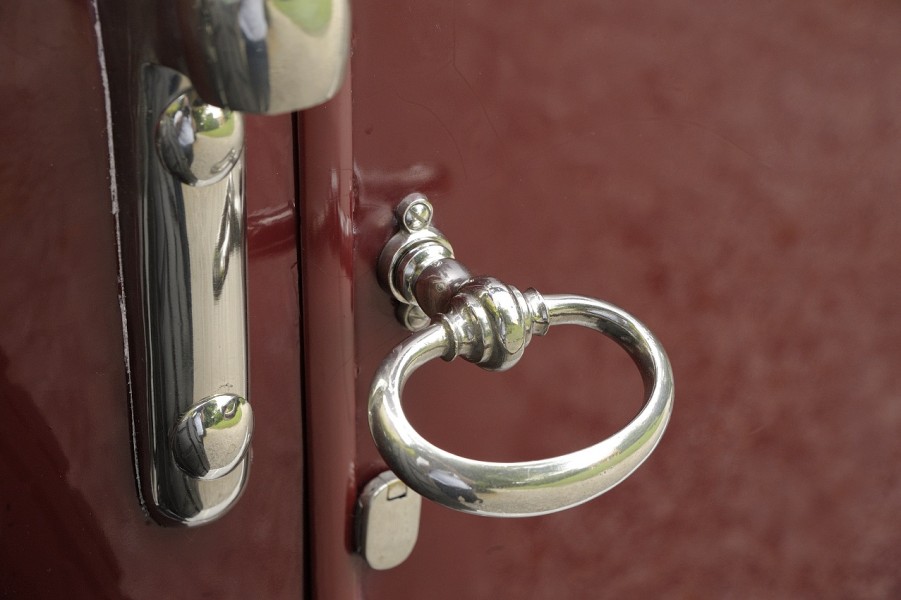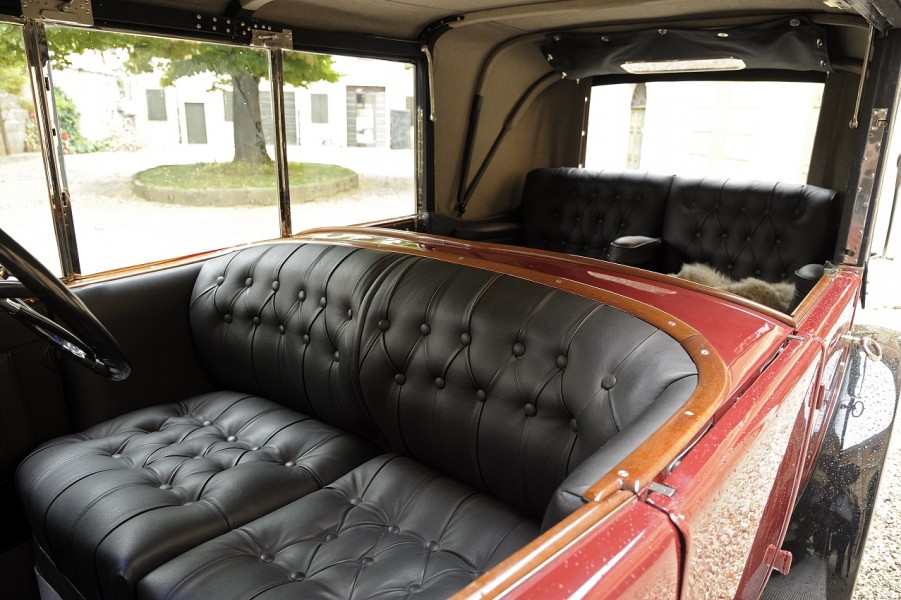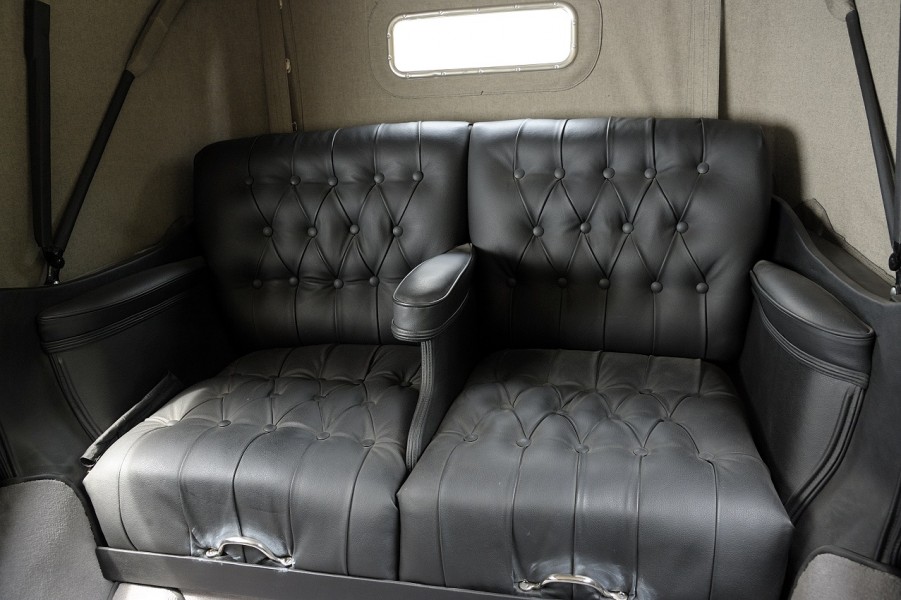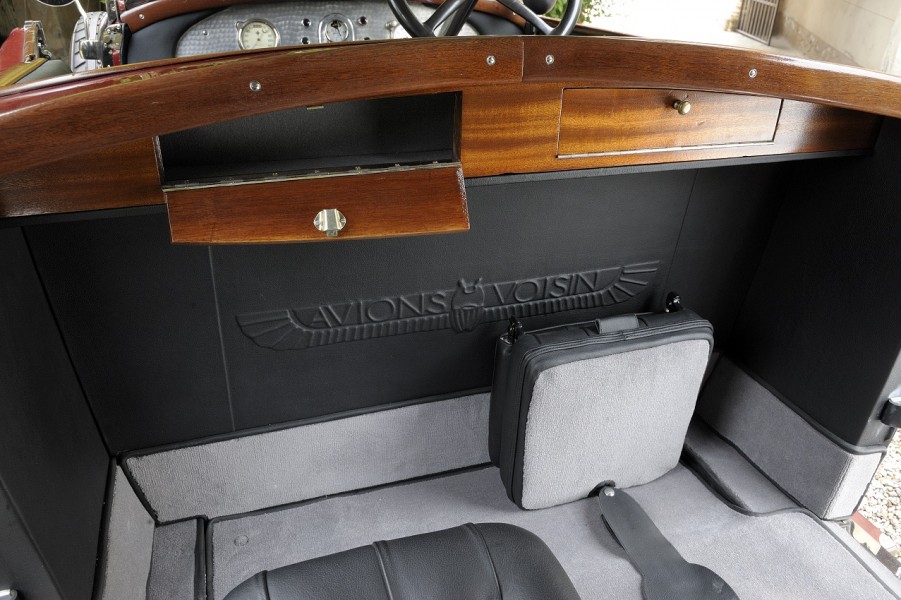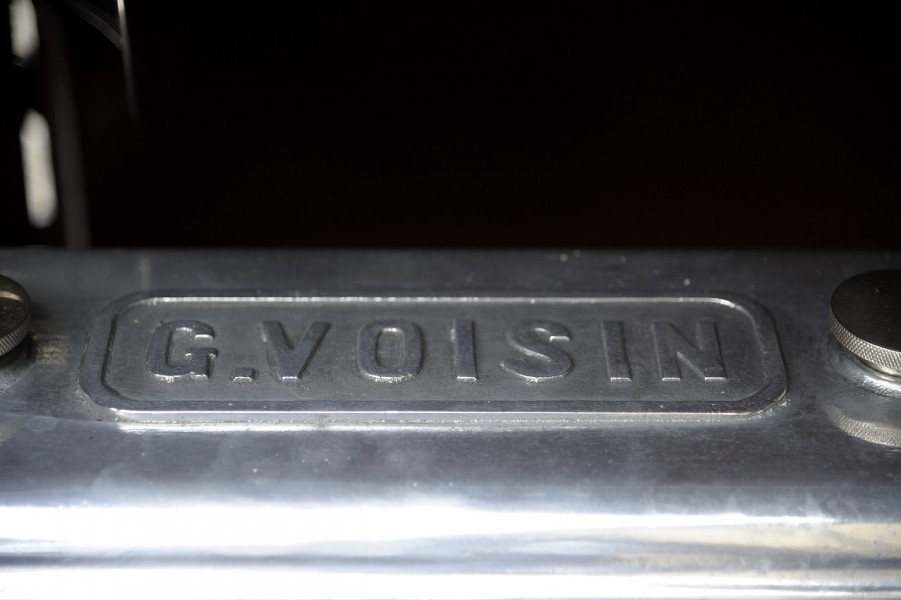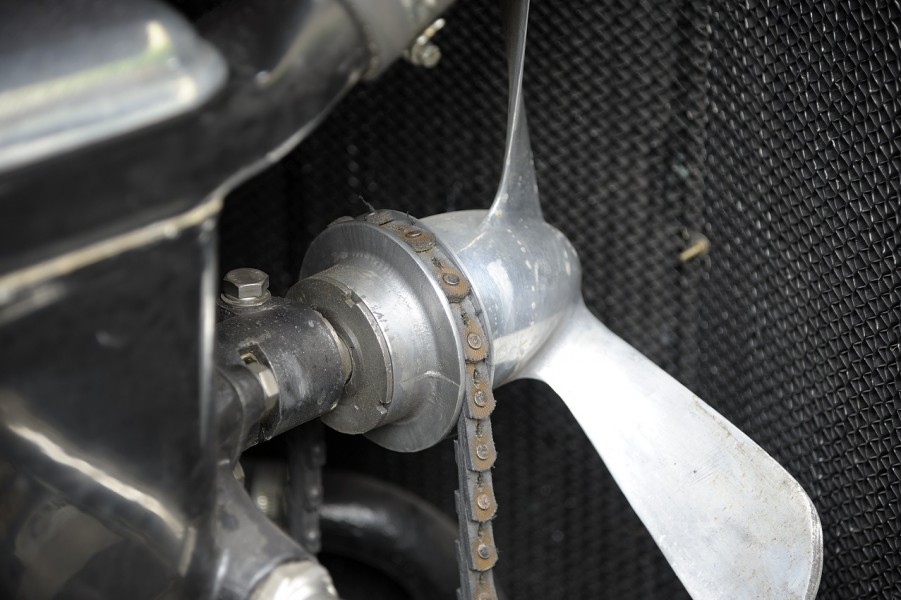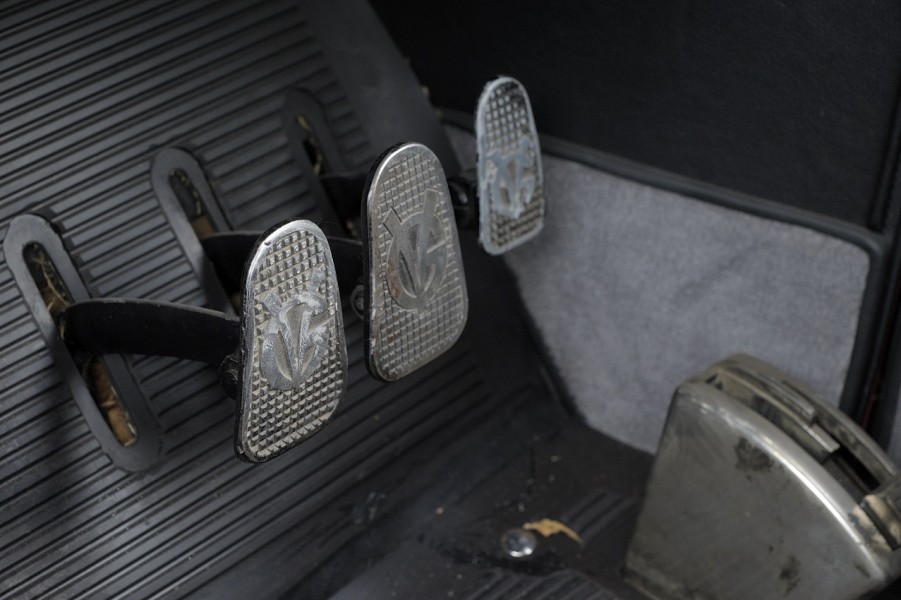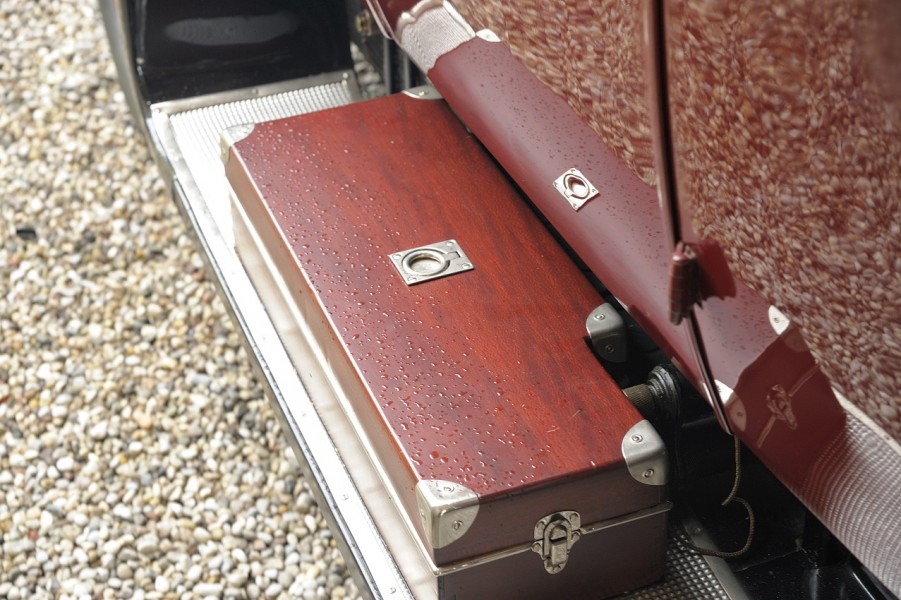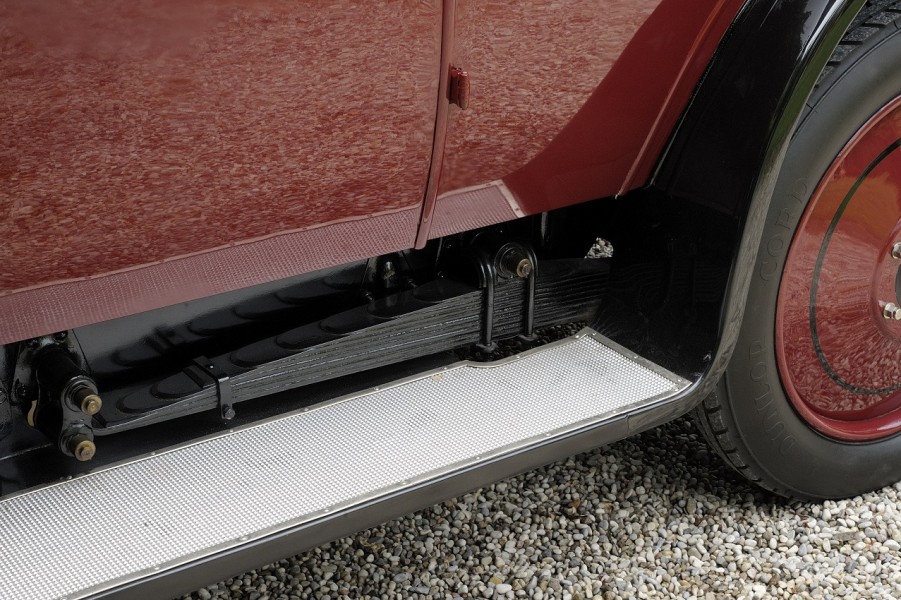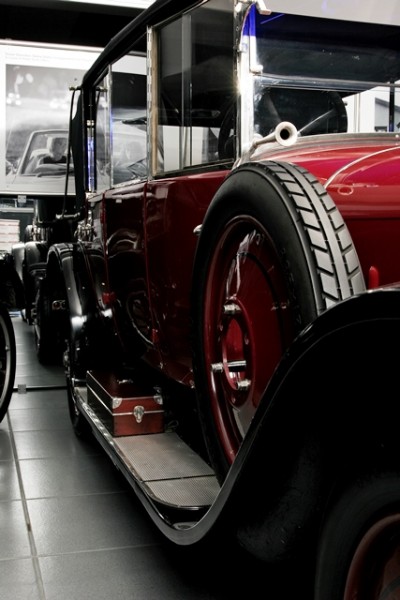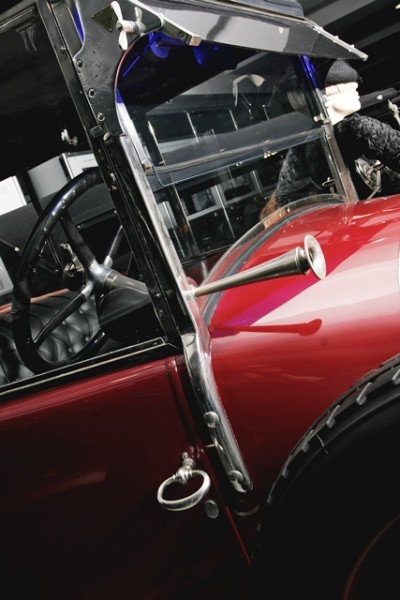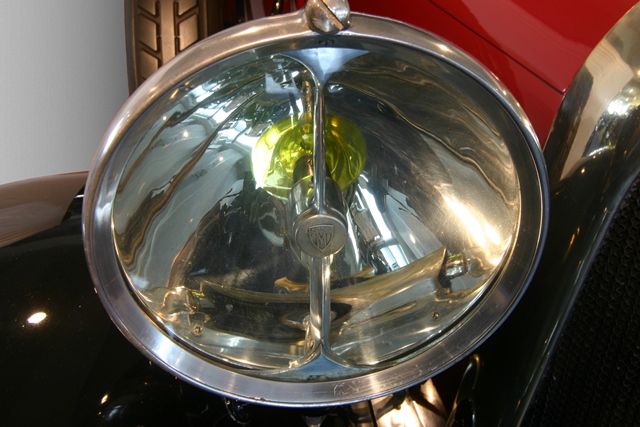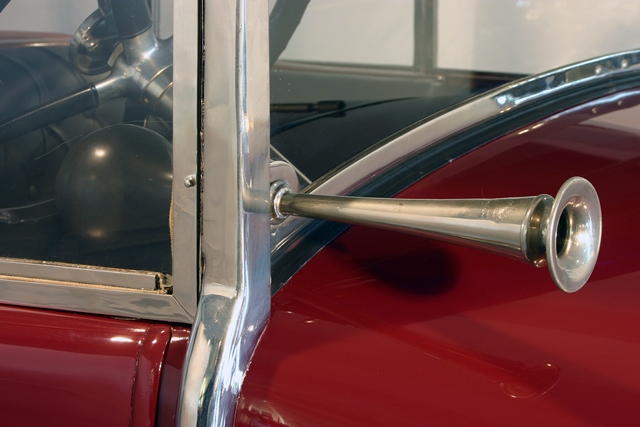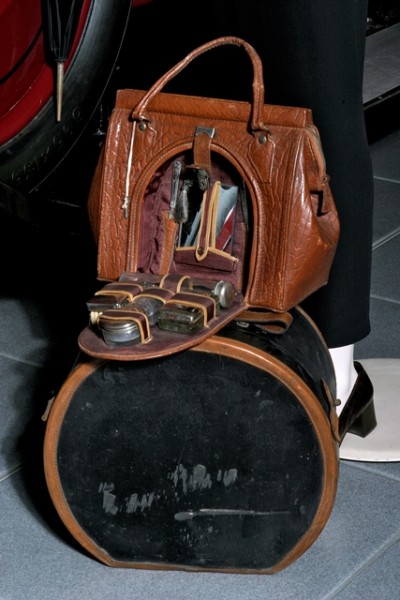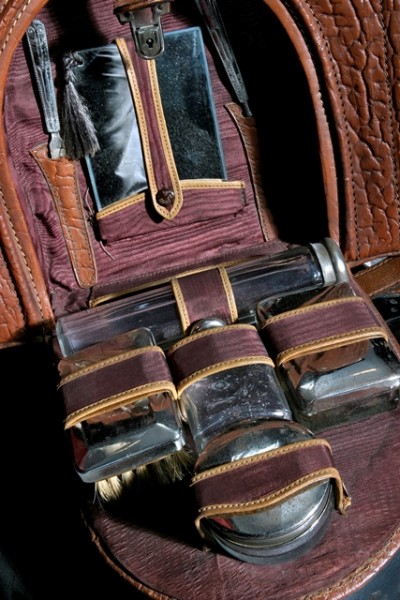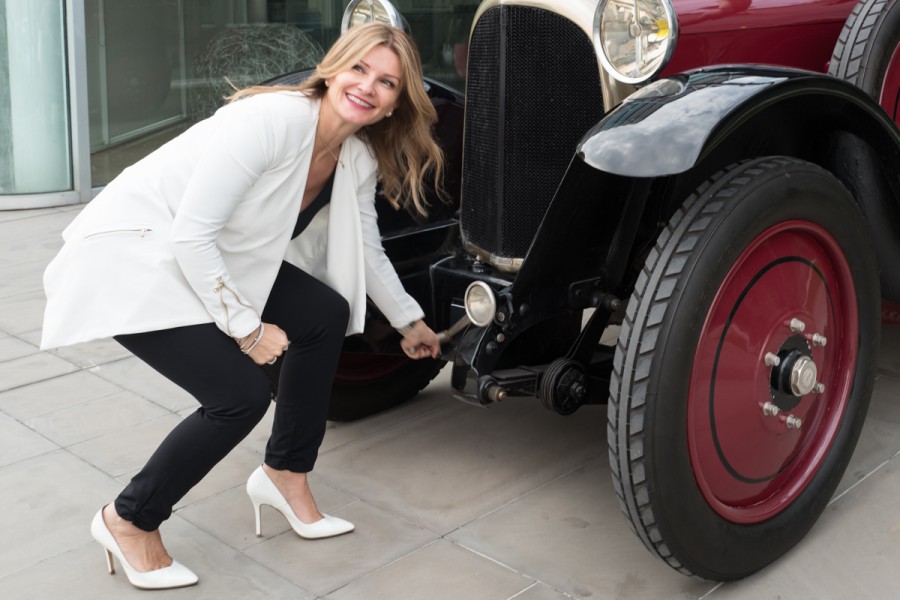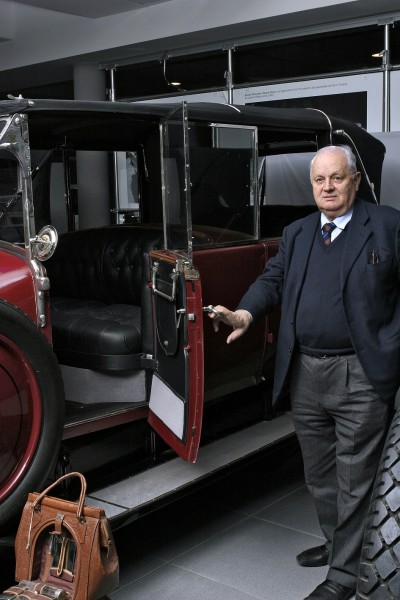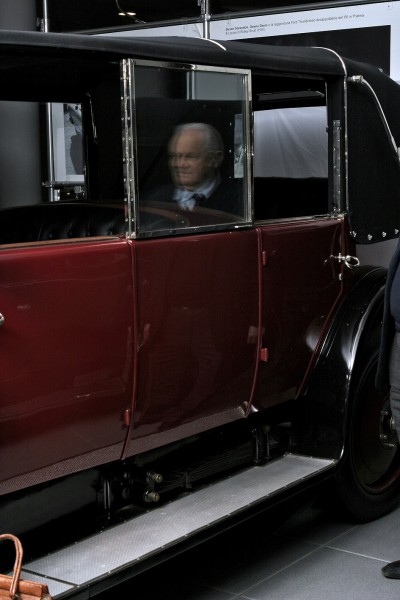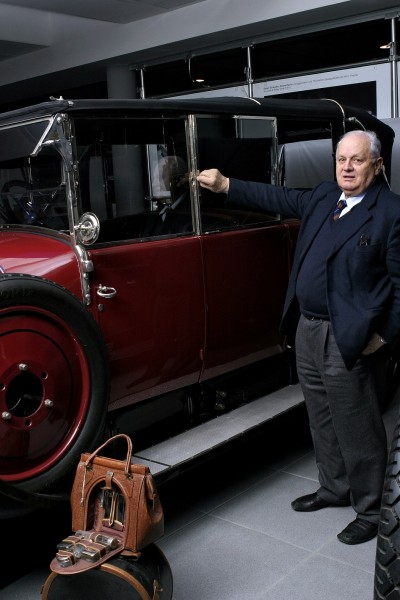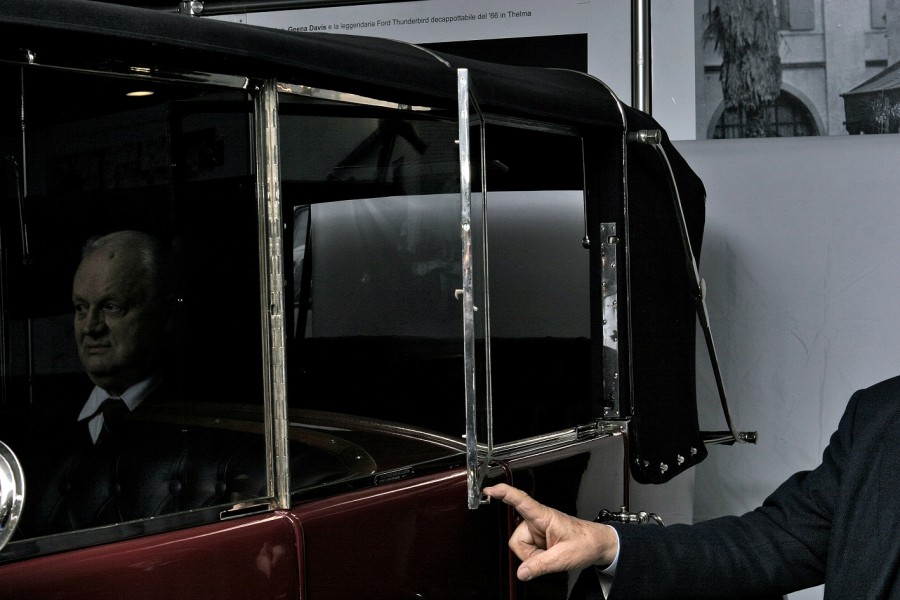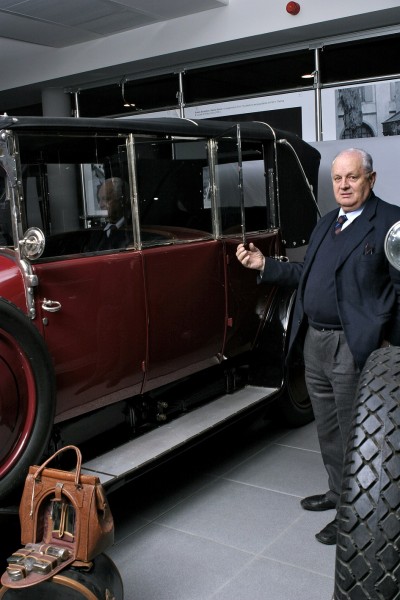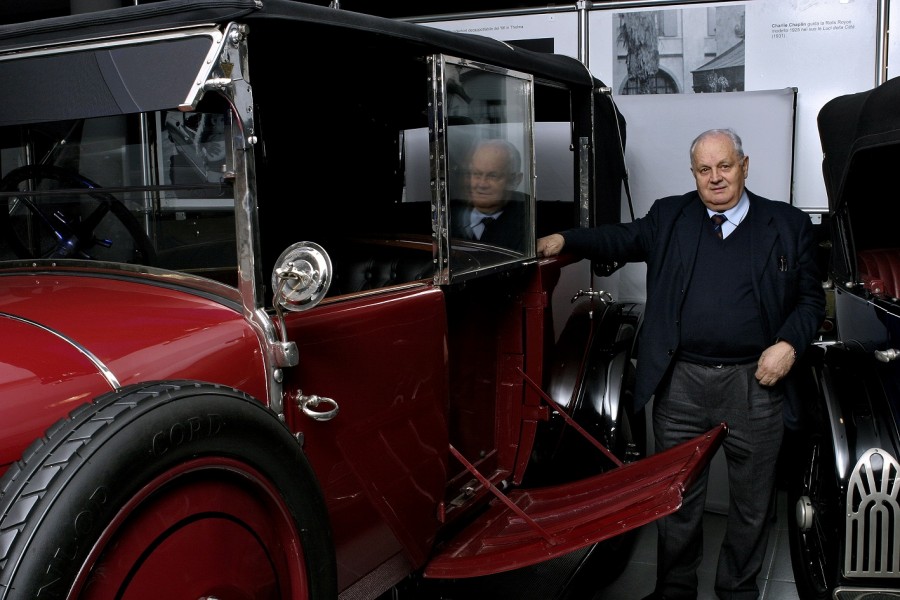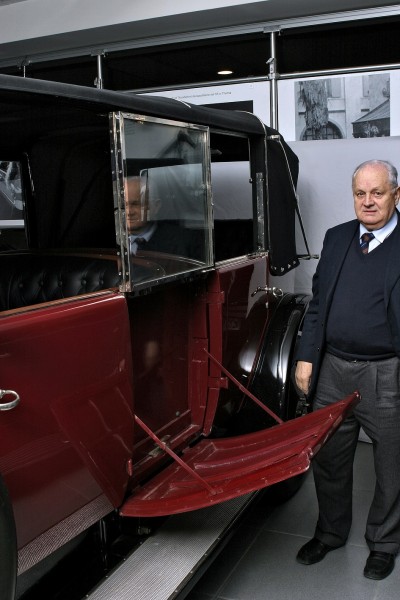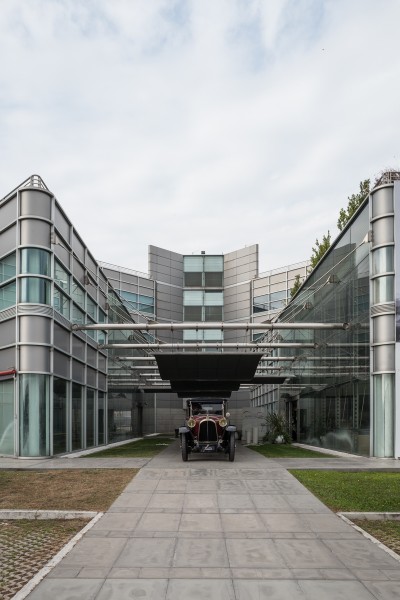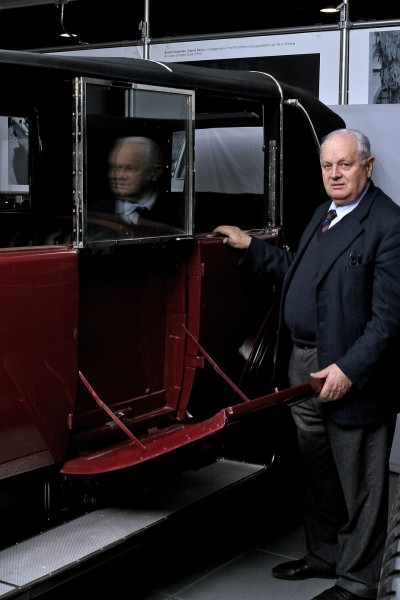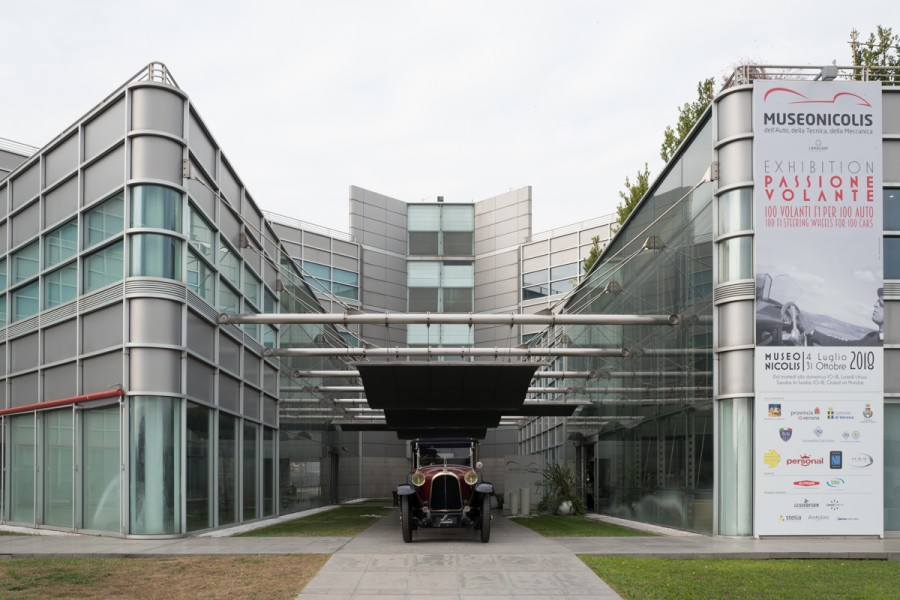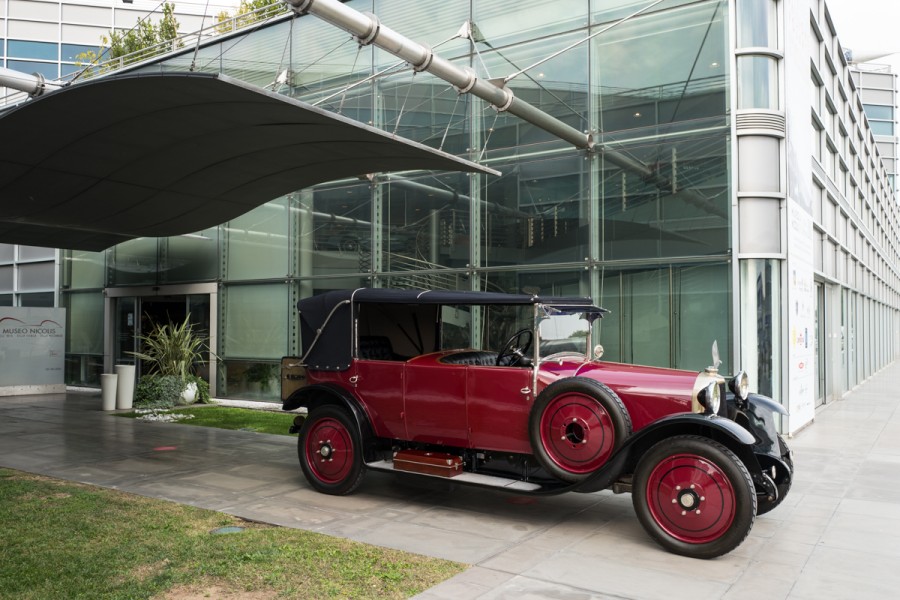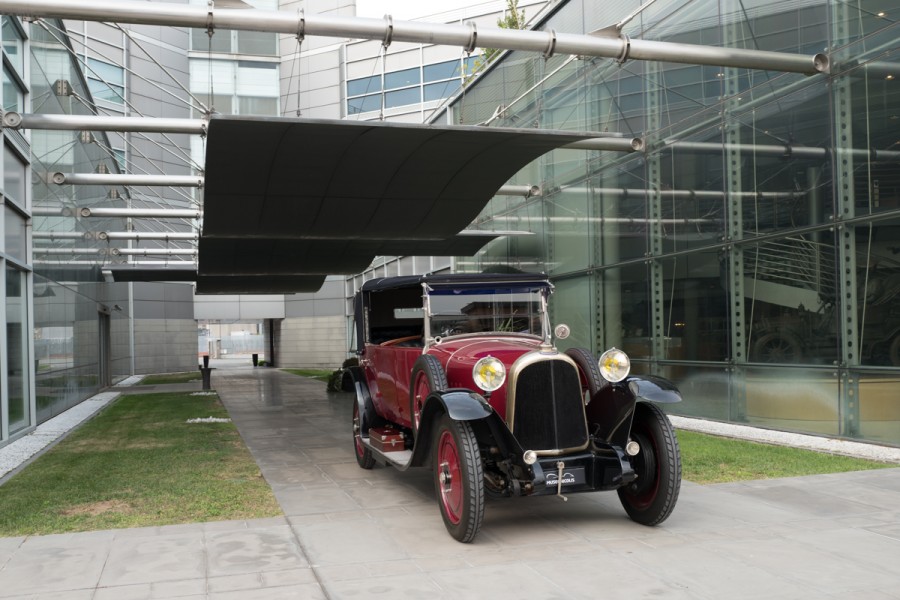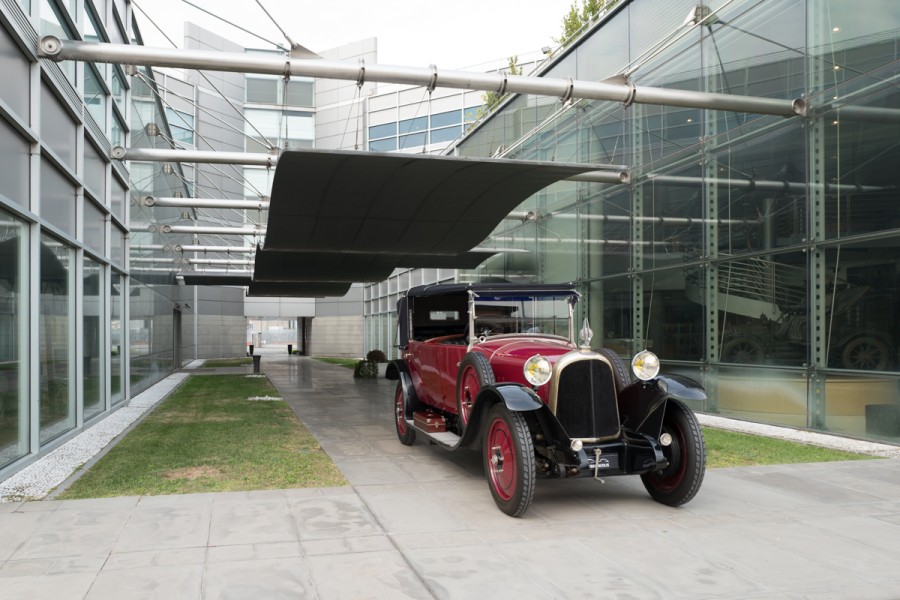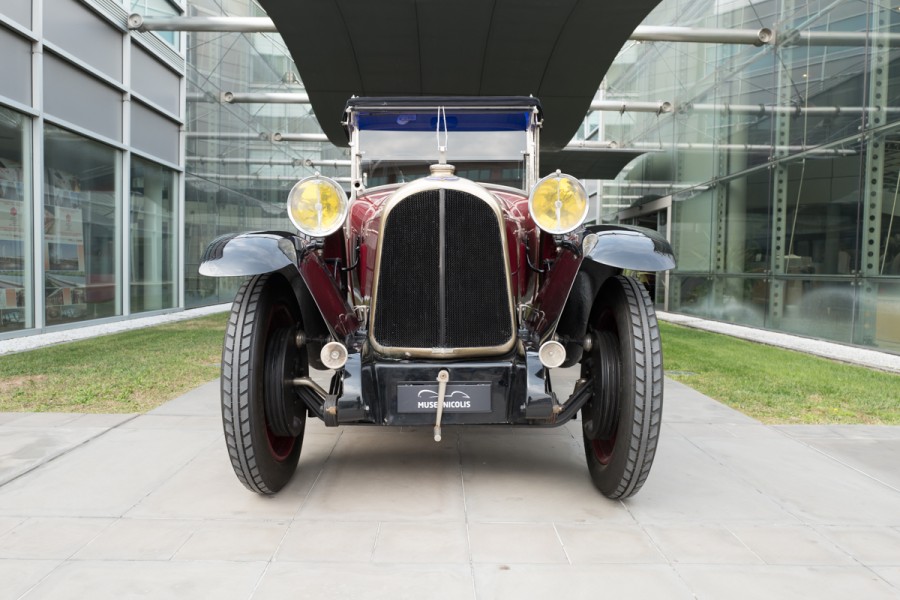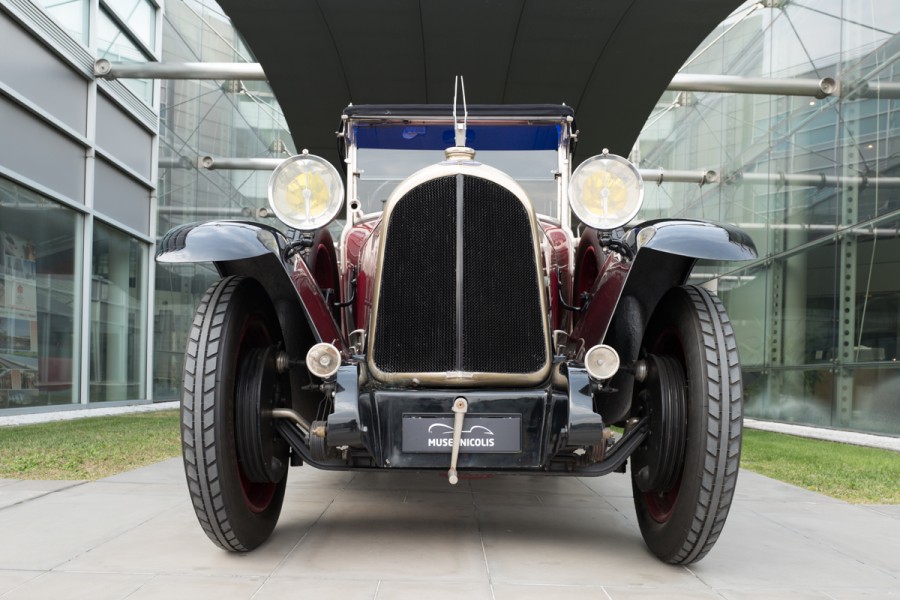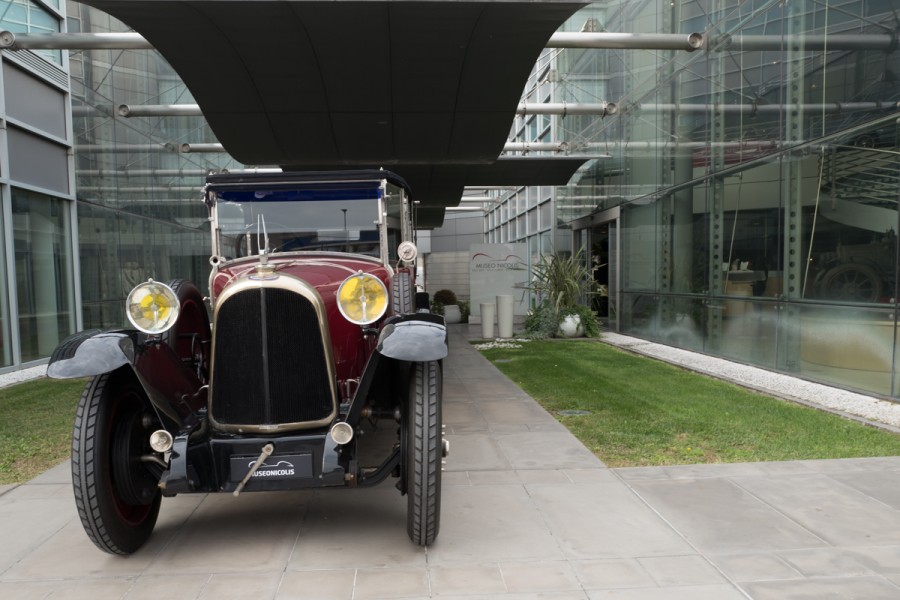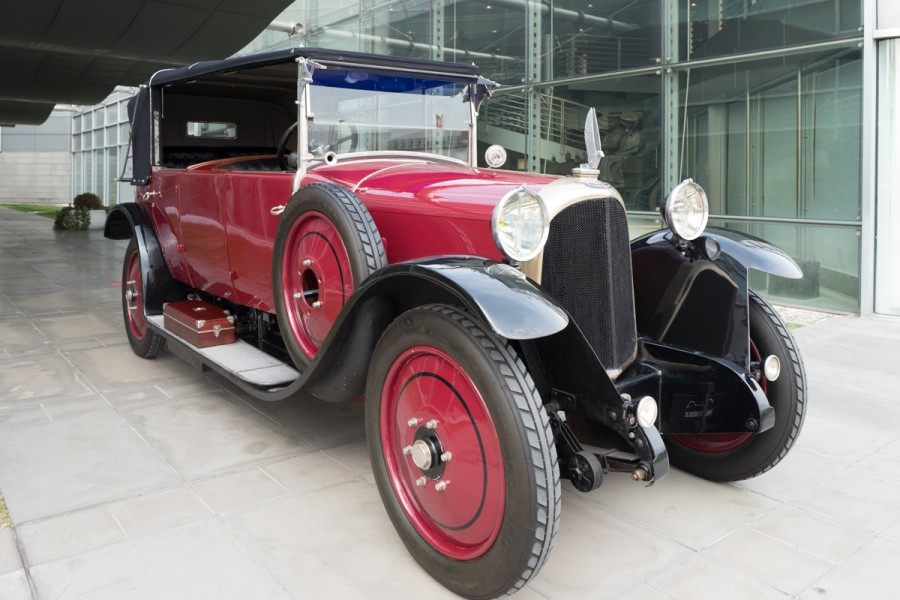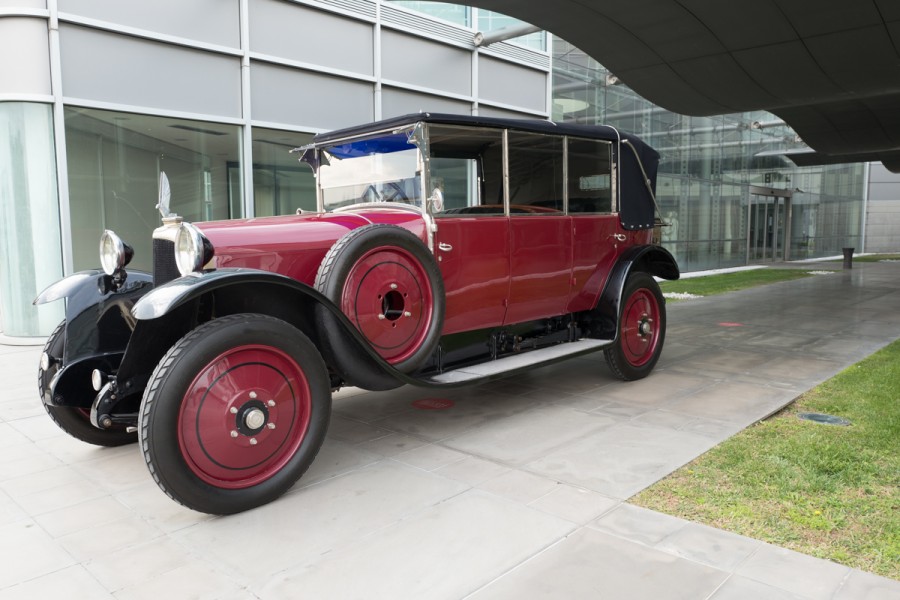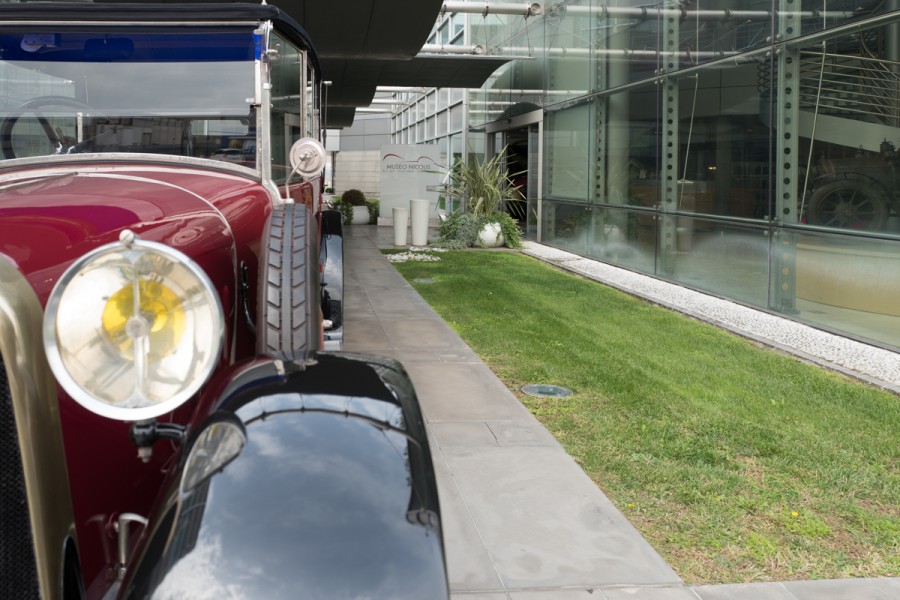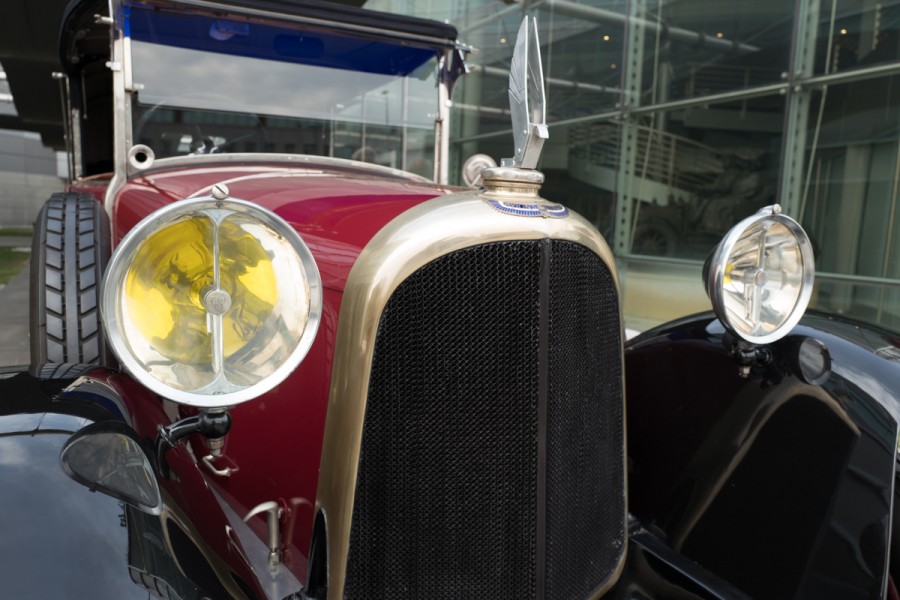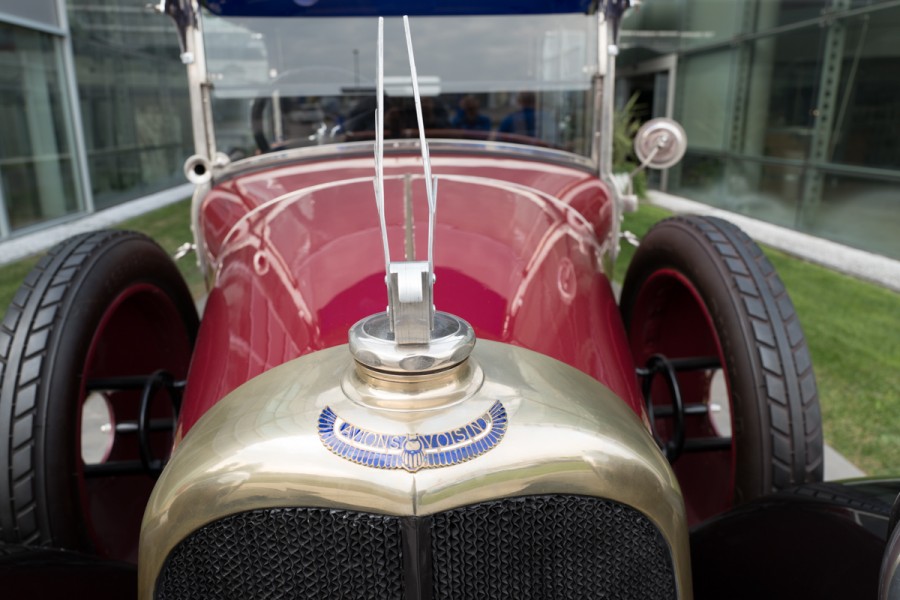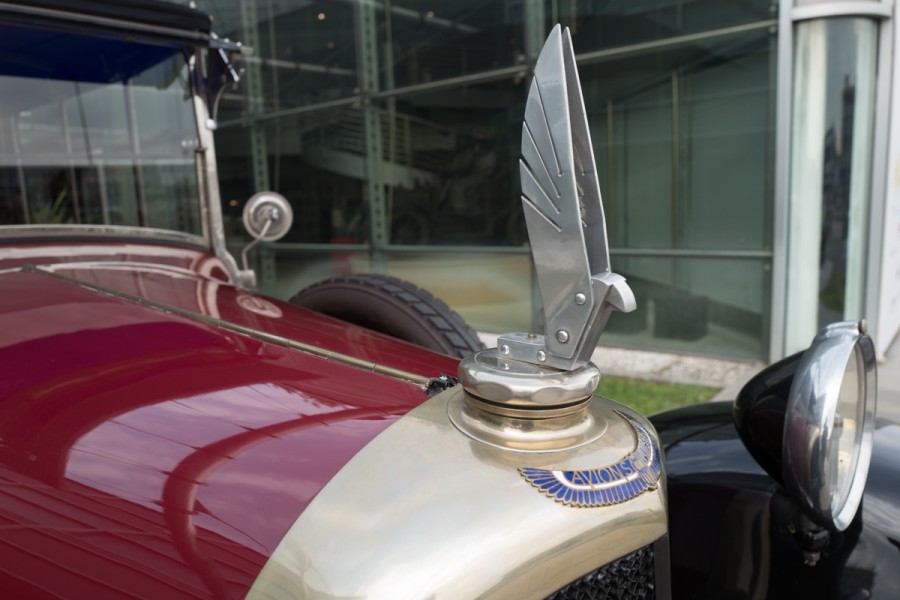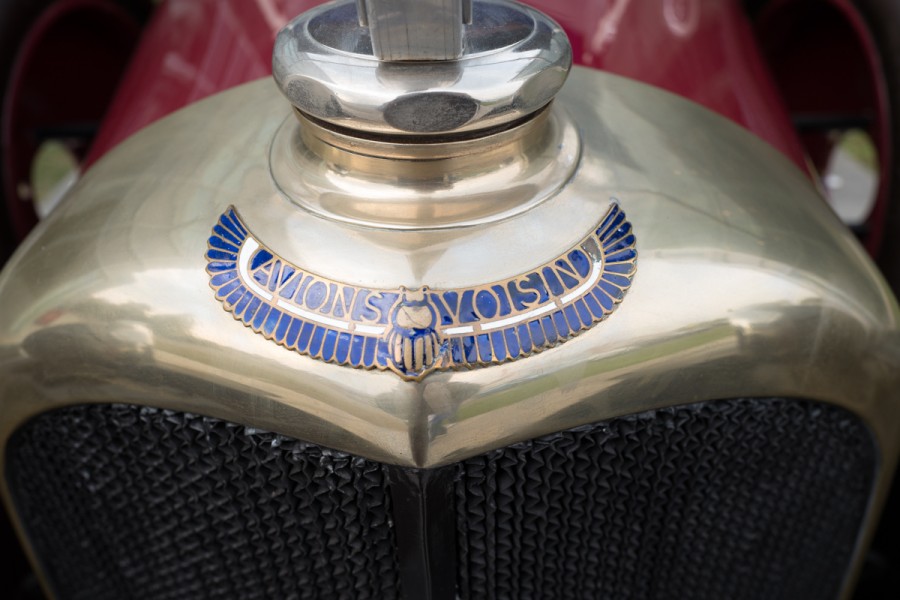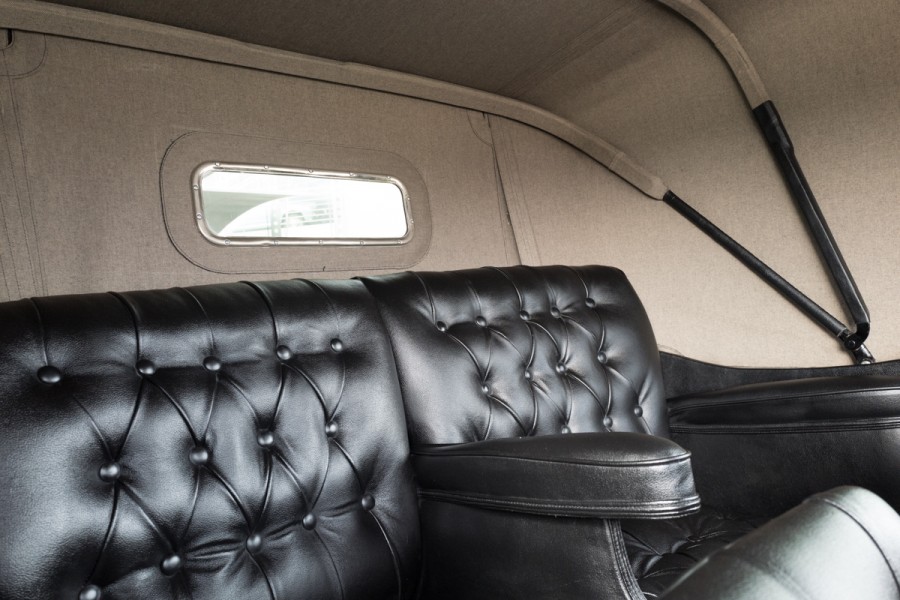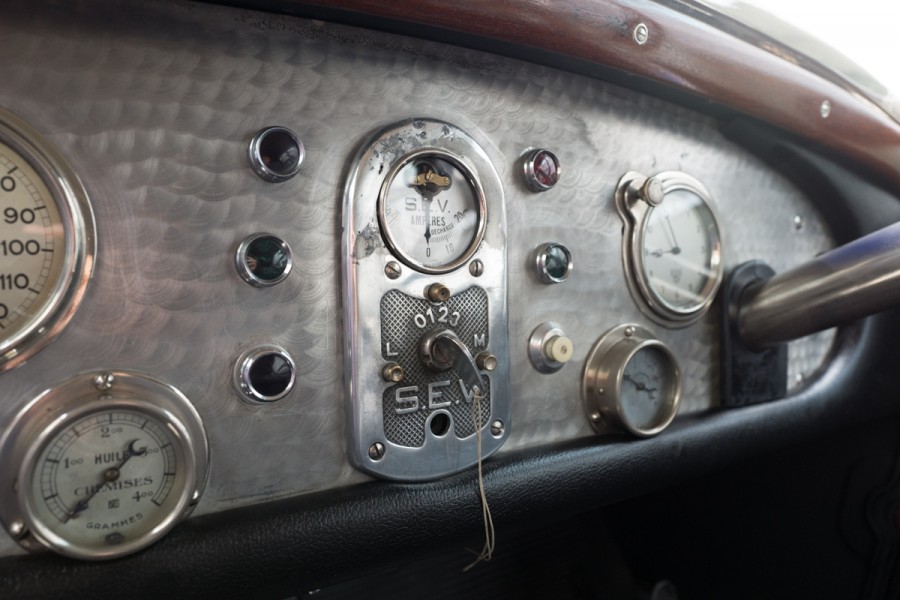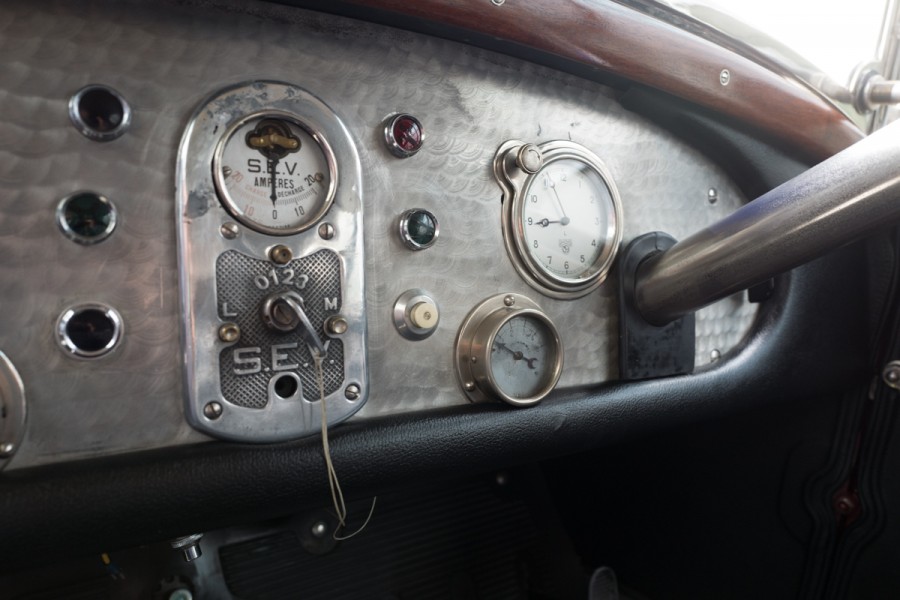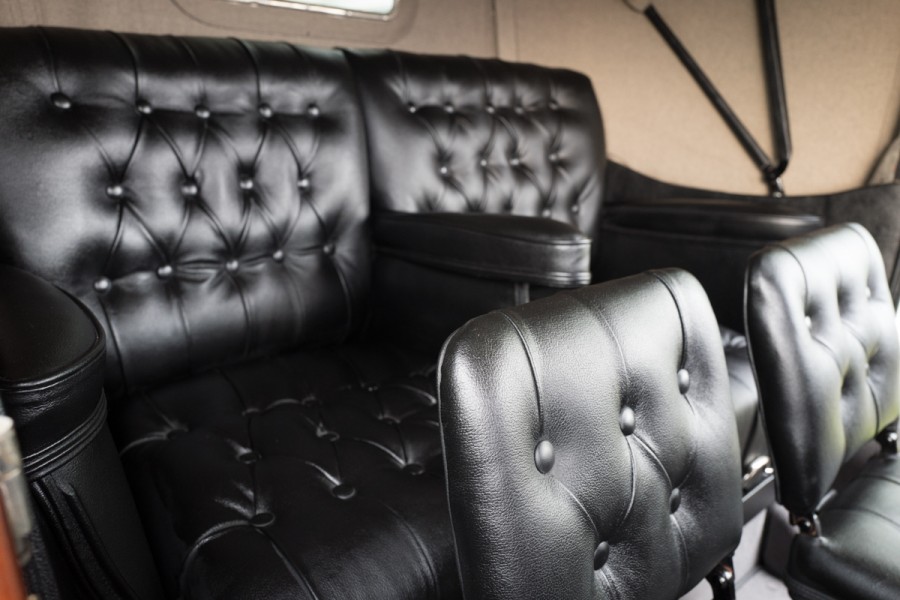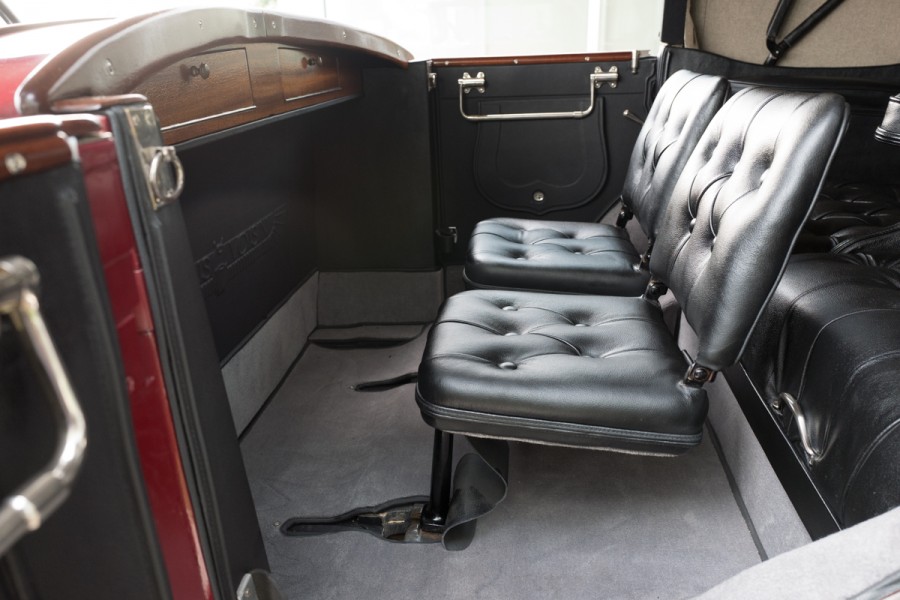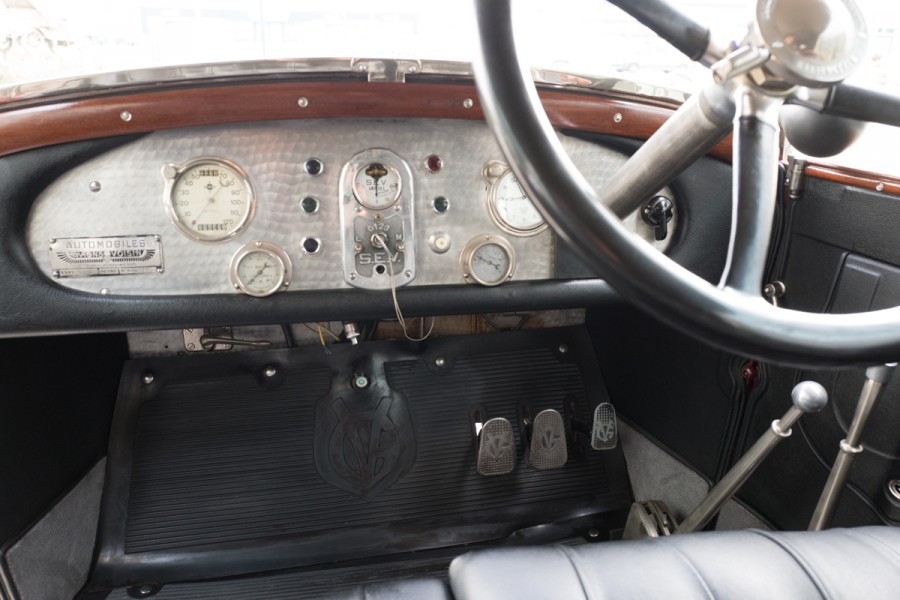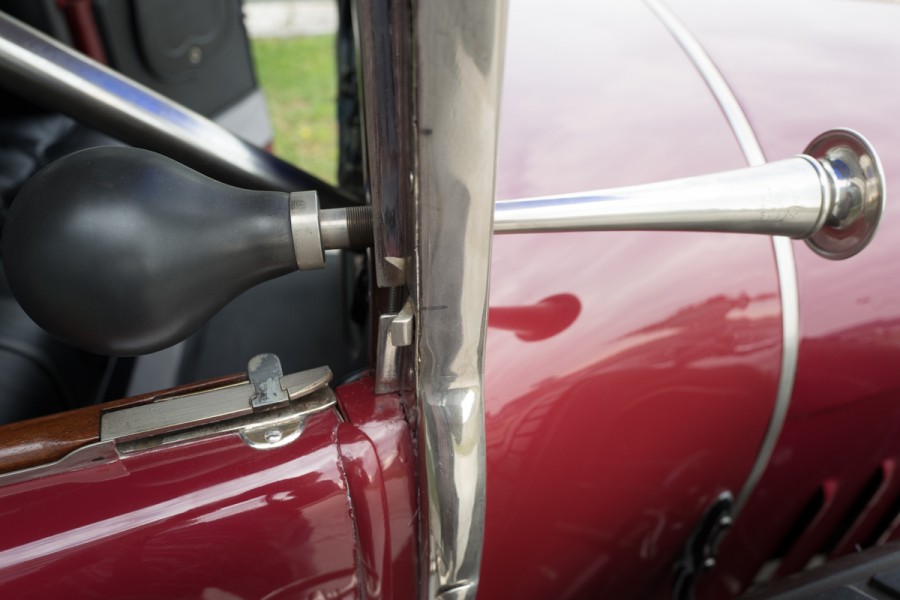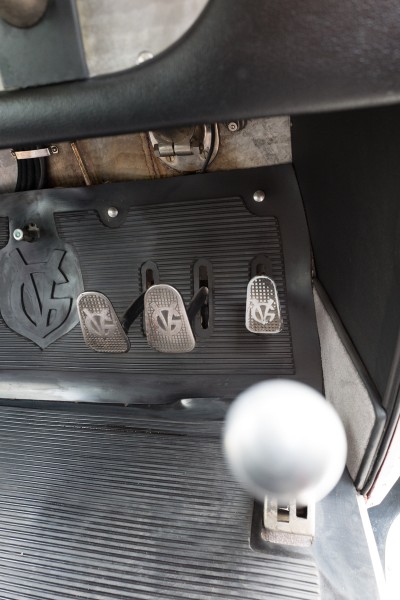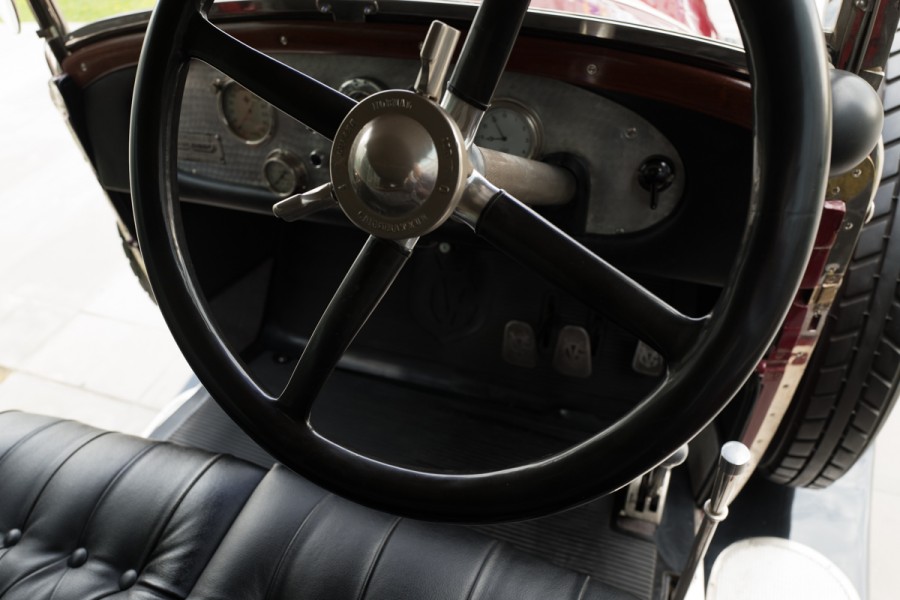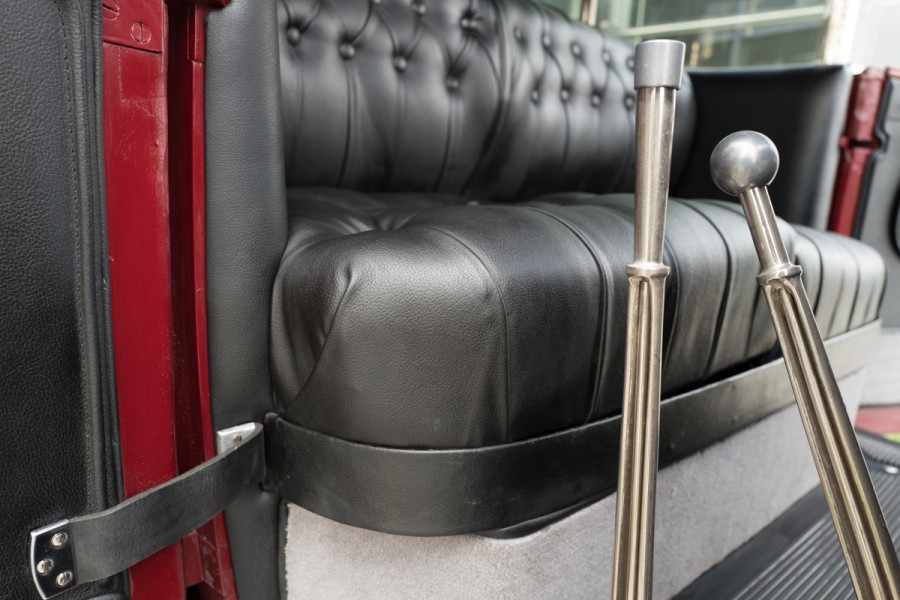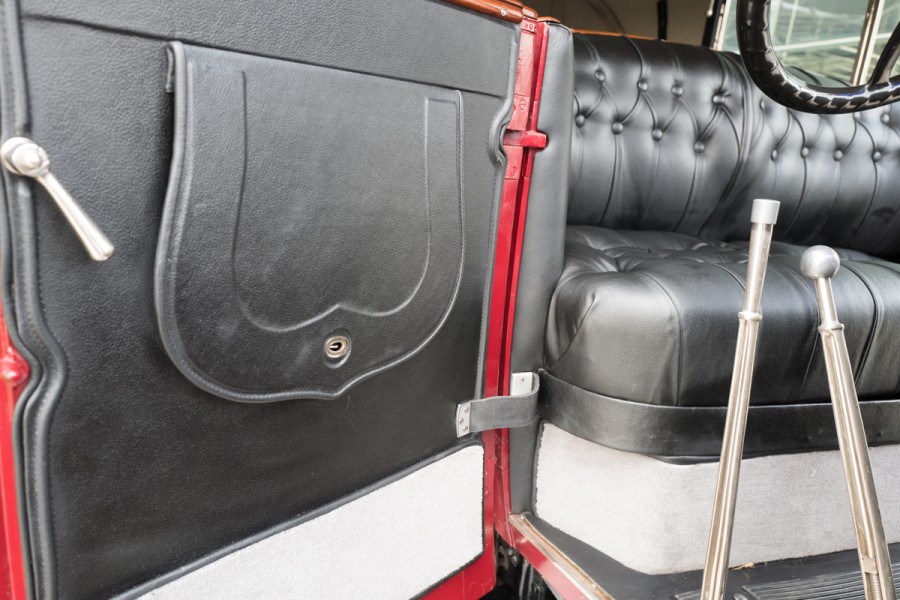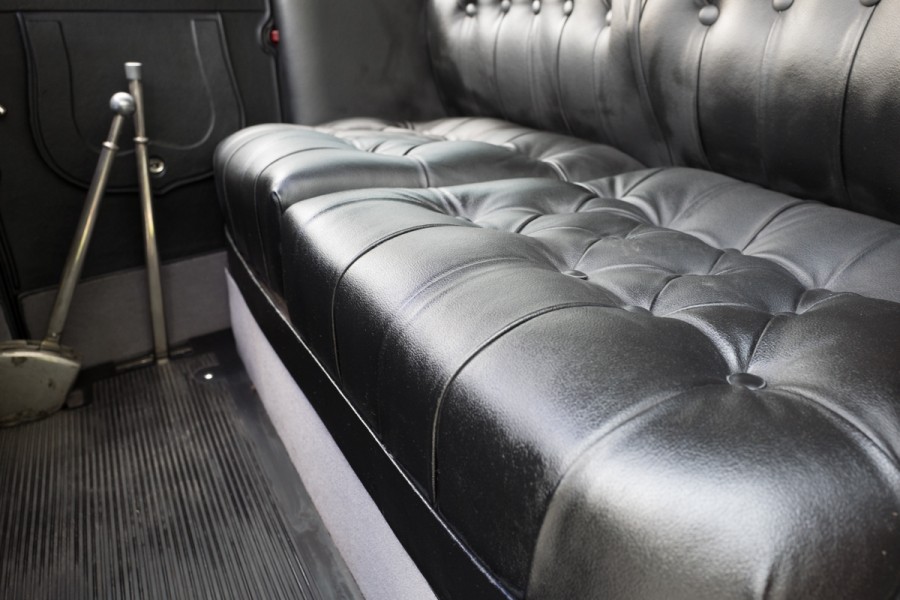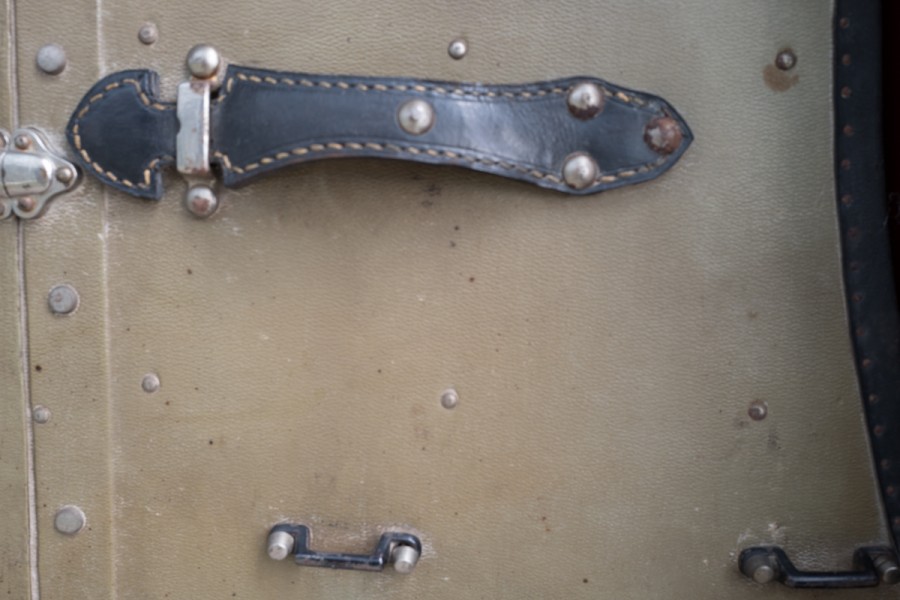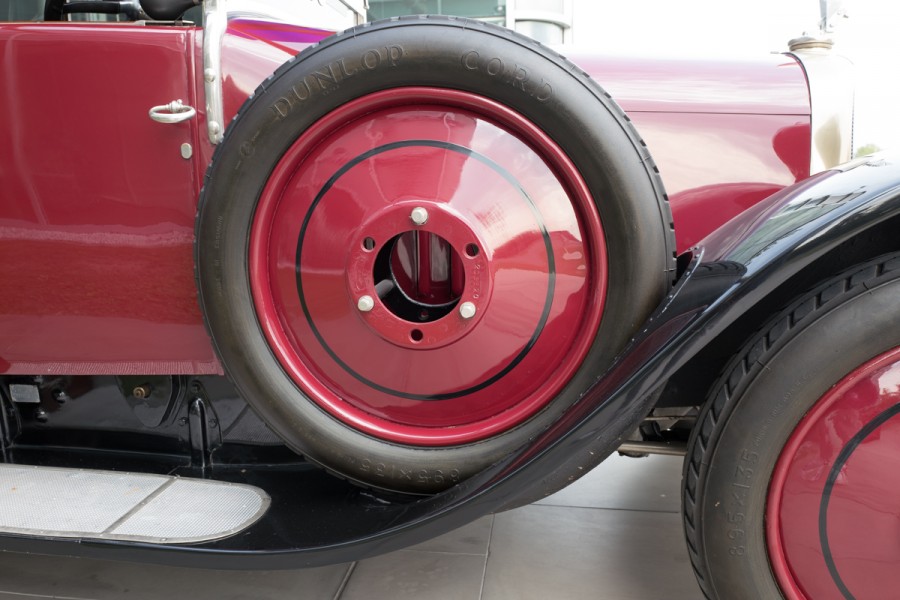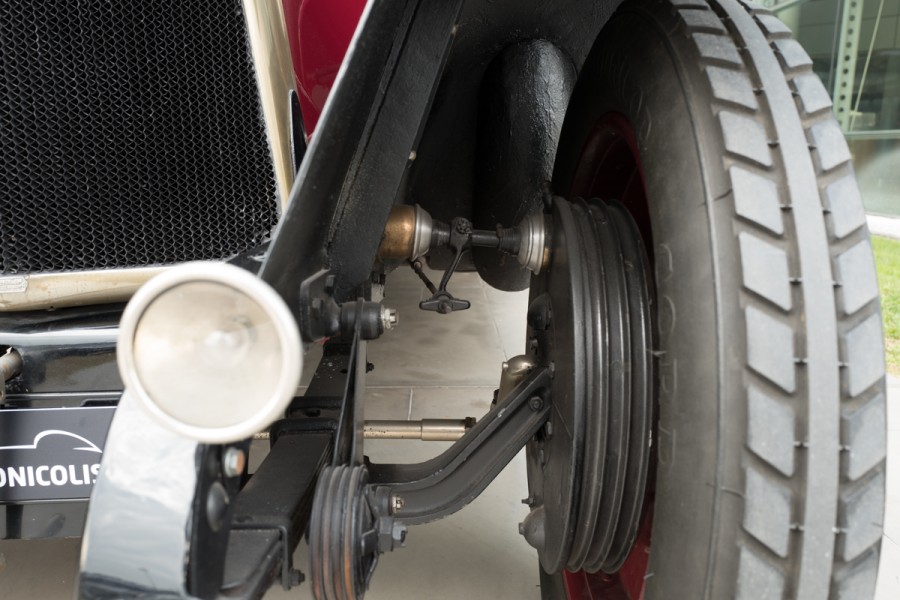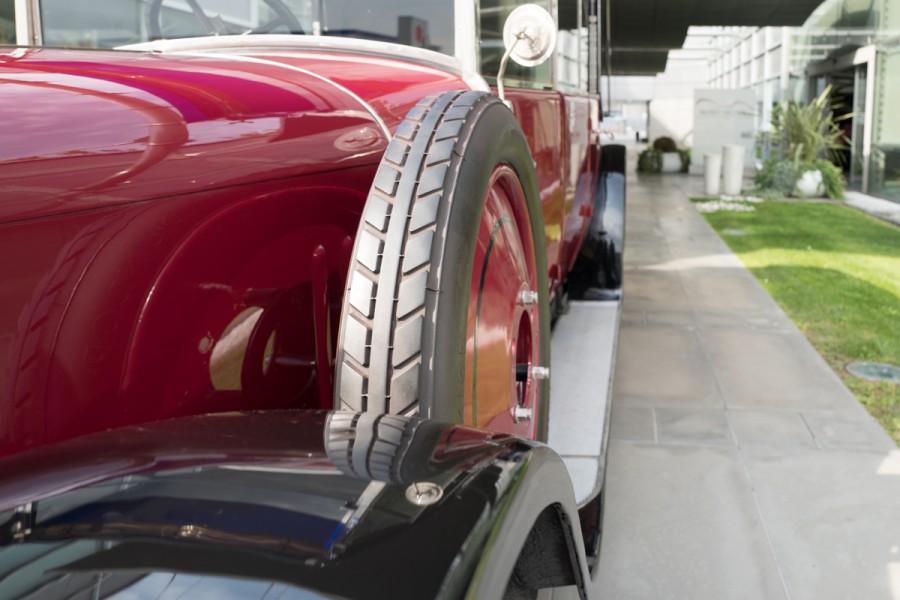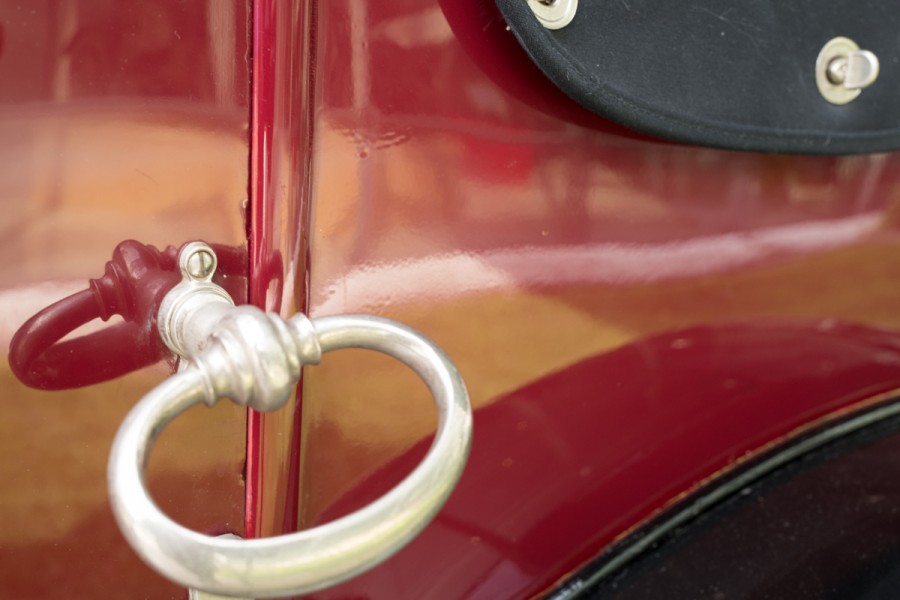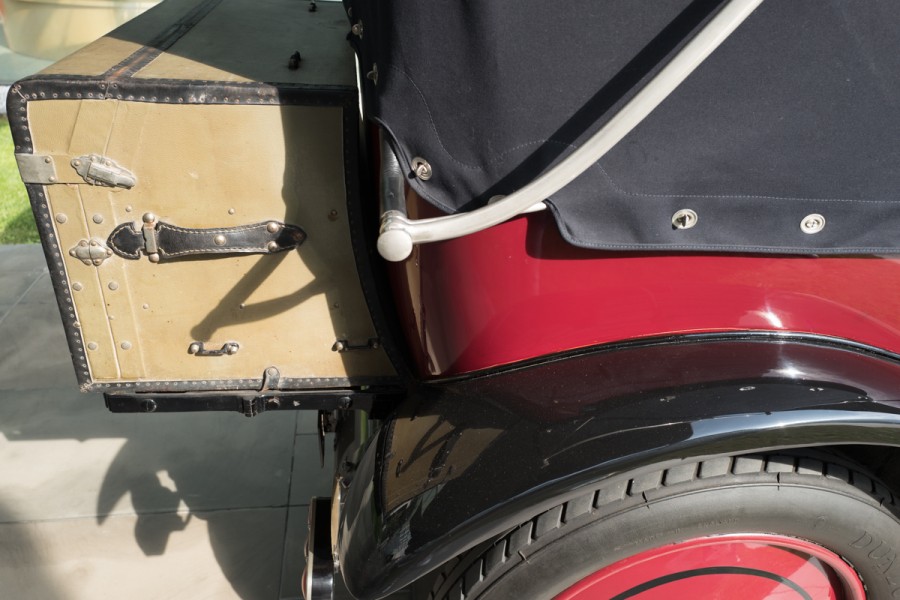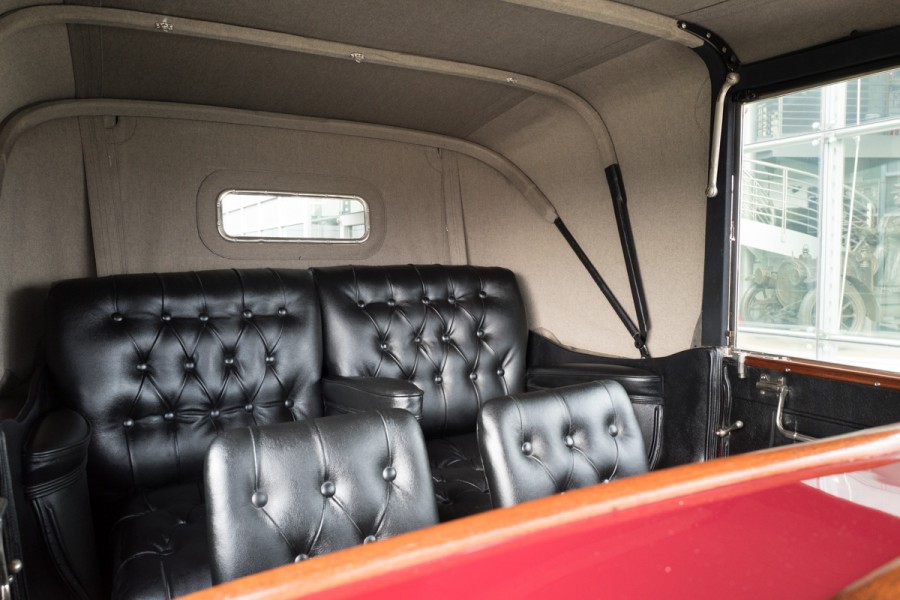Avions Voisin, 1921, C1
Avions Voisin “C1”, Belvalette, Paris, 1921
Gabriel Voisin, pioneer of French aviation, founded the "Société Anonyme des Aéroplanes G. Voisin". Created to produce aircrafts, at the end of the First World War the company was converted to car production using all the experience gained in the aircraft field. This led to the application of aeronautical studies, which had a large development during World War I, on car bodies: the wide use of aluminium, aerodynamics, functionality and originality. The badge of the firm shows a stylized dove whose shape recalls the Egyptian goddess Isis. In 1937, the economic crisis forced Gabriel Voisin to sell his shares; in 1940 the company was acquired by Gnome et Rhone and went back to aircraft production. We owe Gabriel Voisin several innovations such as the reverse light, Cotal electromagnetic gearbox use and large glass surfaces.
The car displayed at the museum is fitted with a Knight type sleeve valve engine and the bodywork, created by Alfred Belvalette, has distinctive windows which could be folded and disappeared inside the door.
Company founder:
Gabriel Voisin , a French aviation pioneer and luxury car maker, born in Belleville-sur-Saone.
Voisin loved mechanics and majored in engineering. At the beginning of the century, he became one of the first French airplane manufacturers, together with his brother Charles, starting the “Société Anonyme des Aéroplanes G. Voisin” in Issy-Ies-Moulineux, Paris. The success was immediate, thanks to the record established in January 1908 by the pilot Henry Farman who managed to fly for a kilometer with a Voisin airplane for the first time. The majority of WWI bombers were branded Voisin. Gabriel Voisin became rich and famous and when the war ended, he started to become interested in cars, creating highly-personalized vehicles. Elegance, refinement and comfort were added to the well-known quality and strength of the company. Among the technical innovations Voisin introduced lightweight bodies, large glass surfaces, the reverse light and the Cotal electromagnetical gearbox.
Aeronautical studies were unusually applied on cars. Voisins are distinguished by a wide use of aluminium and this streamline design, functional and very original. The C1 model, derived from the first 1919 car, was made in about 1000 specimens detined for French and export market.
Badge: The company badge can be found on the radiator: a stylized dove whose shape recalls the Egyptian goddess Isis. It was taken by the previous aircraft production. Fun fact! The AVIONS name, that stands for airplanes, was added to Voisin only after the aircraft production ended.
Engine: The vehicle displayed at the museum is powered by a Knight engine, that uses sleeve valves instead of the more common poppet valve construction. Voisin was in fact fascinated by the noiselessness and powerful characteristics of this system. The car is very wuite and doesn't vibrate, following the refined customers' expectations of the French company. The C1 name means: “C” taht stand for Charles, Gabriel's brother who died in a car accident and “1” basically meant it was the first model. The last one will be the "C30" in 1937.
Bodywork: A clever invention on the bodywork, made by Alfred Belvalette, is the windows which could be folded and disappeared inside the door (you could roll down the windows but also fold them inside a specific compartment located in the door).
Driving position: Steering wheel on the right, handbrake and gear lever located inside the cockpit near the door, hard to move when you seat down, especially the gear lever which is right under the driver's thigh.
The wide steering wheel with a thick rim with the electric starter lever in the center.
Interior: the front seats are finished as the rear ones, finely quilted in leather, not so common at the time!
Other quirks: The rear trunk is Italian, as written on the plate on it. The wheels have full hubcaps. In the 20s this was an uncommon solution compared to wooden or metal spoked wheels.
Closure: despite the technical direction was full of creativity, money started to run low and Voisin was forced to sold the company to a Belgian group. Once the founder left, the company tried to survive until 1939 and in 1940 Gnome and Rhone bought it and destined Voisin for aircraft engine production for the imminent war.
2013 Shooting, Ruoteclassiche, Voisin.
2018 Fiera Auto e Moto d'Epoca, Padova.
2018 Poste Italiane chose this car for a philatelic postcard.

